1920 Jazz Happy Days Are Here Again Public Domain
Everett Collection // Shutterstock
50 pop songs in the public domain
The twelvemonth 1925 was significant in American history: Calvin Coolidge became president, the Harlem Renaissance was in full swing, the Scopes Trial began, the Chrysler Corporation was founded, and New York Metropolis officially became the largest city in the world. It was also a large year for the arts: F. Scott Fitzgerlad published "The Great Gatsby," Virginia Woolf published "Mrs. Dalloway," "Go West" hit theaters, and Jelly Roll Morton had audiences dancing to "Shreveport Stomps." At present, in 2021, those works, and hundreds of others like them, are hitting the public domain.
Being in the public domain means that no one individual or corporation holds intellectual rights to the work whatever longer. Therefore, the piece of work in question can be used without permission. When piece of work enters the public domain, it becomes, essentially, endemic by the public. (At that place are caveats, of form. If an creative person repurposes works in the public domain for something new, for instance, the artist's new piece of work won't fall in the public domain.)
Originally, these works would accept been free to use 75 years after publication, or in 2001. However, in 1998, Congress extended the copyright laws an boosted 20 years, keeping these works out of the public domain for that much longer.
In honor of this year's class of works—arguably 1 of the best to date—entering the public domain, Stacker compiled a list of 50 of the almost-listened to songs in the Public Domain, called from the Public Domain's list of the 698 most popular songs within. From "Happy Birthday" to "Pomp and Circumstance," read on to learn a bit more about these archetype songs.
You may too similar: #1 pop vocal from the year y'all graduated loftier school
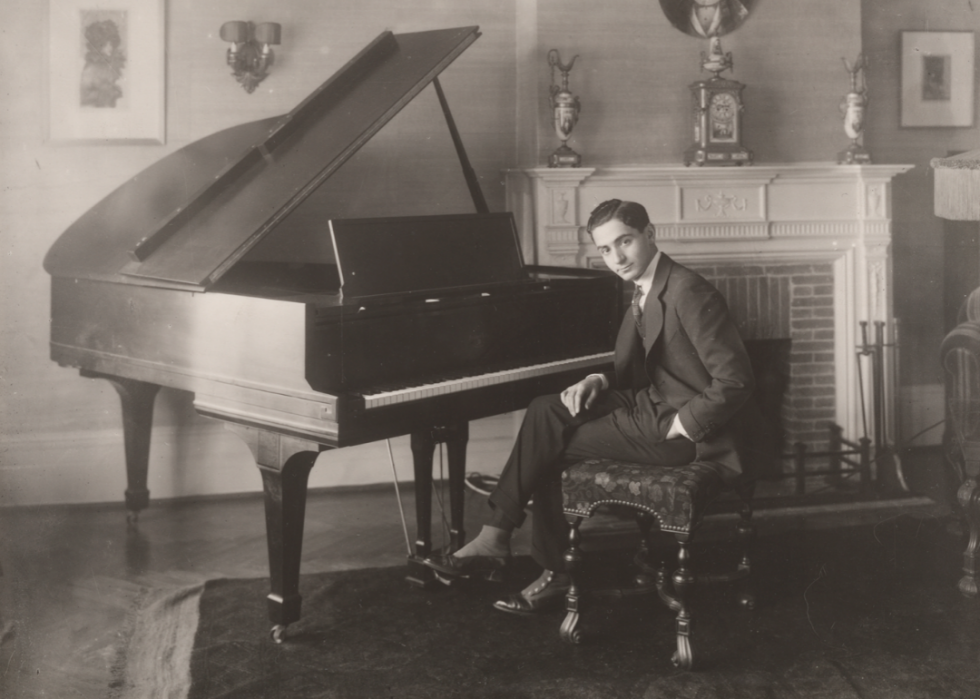
one / l
Pach Brothers/Smithsonian Institution // Wikimedia Commons
"After Yous Become What You Want, Yous Don't Desire It" by Irving Berlin
Irving Berlin is widely considered to be one of the greatest songwriters in American history, with an estimated ane,500 songs and 20 original Broadway shows to his name. This particular song, "After You Get What You Want, Yous Don't Want It," was written for the film "There'southward No Business Similar Prove Business," and performed by the legendary Marilyn Monroe.
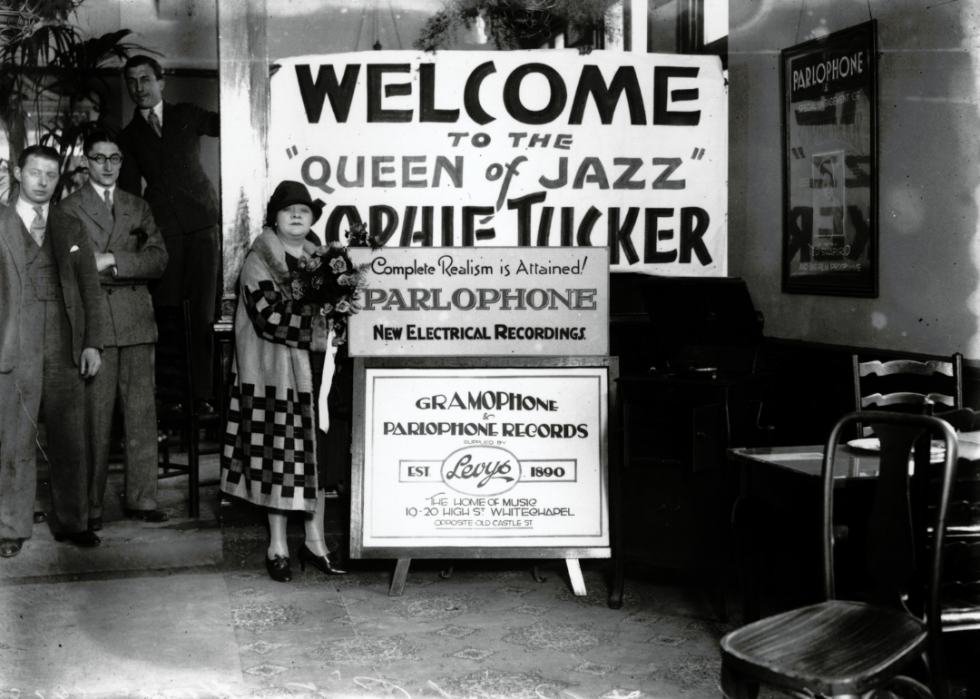
2 / 50
Fundamental Press // Getty Images
"Some of These Days" by Shelton Brooks
The song "Some of These Days," written past Blackness ragtime and vaudeville composer Shelton Brooks, was first performed by Sophie Tucker. Brooks was inspired to write the song after overhearing a heated argument between two women in a eating house that independent the titular line. He got the song in front of the burlesque singer'southward eyes by passing information technology through her maid, and, when she performed it the next dark, it became an instant hit, with the sheet music eventually selling more than 2 million copies.
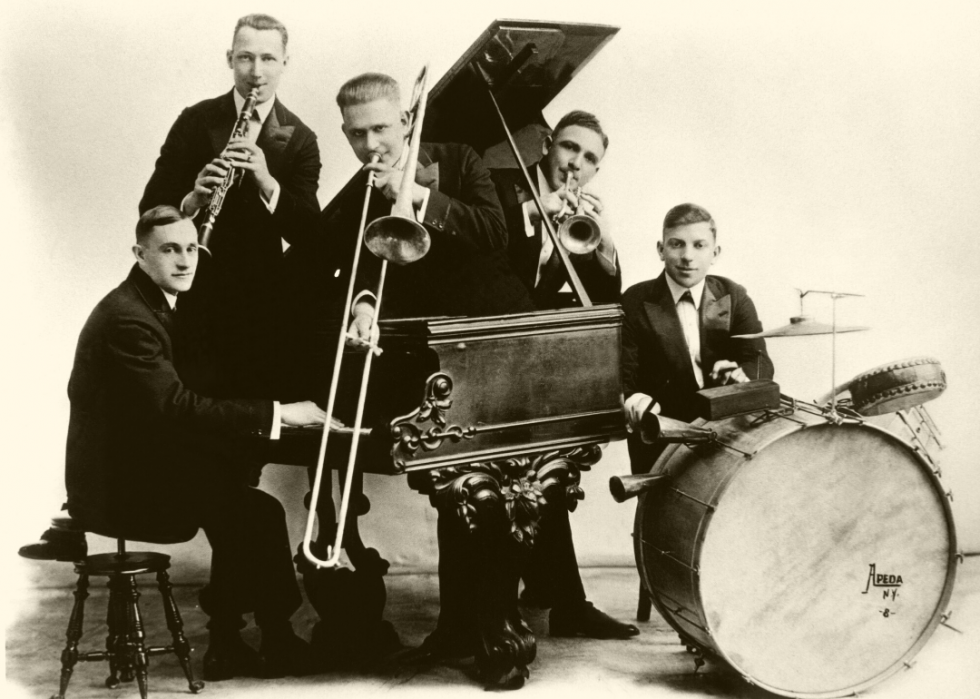
3 / 50
JP Jazz Archive // Getty Images
"Darktown Strutters Ball" past Shelton Brooks
Another famous Shelton Brooks song that'due south in the public domain is "Darktown Strutters Brawl." The tune, about a night out on the town, was one of the earliest crossover hits, becoming immensely popular with Black and white audiences alike. Since its release in 1917, the vocal has been performed and recorded past dozens of artists and bands, including Bing Crosby and The Beatles.
[Pictured: Original Dixieland Jazz Band in 1917 (L to R) Henry Ragas, Larry Shields, Eddie Edwards, Nick La Rocca and Tony Spargo.]
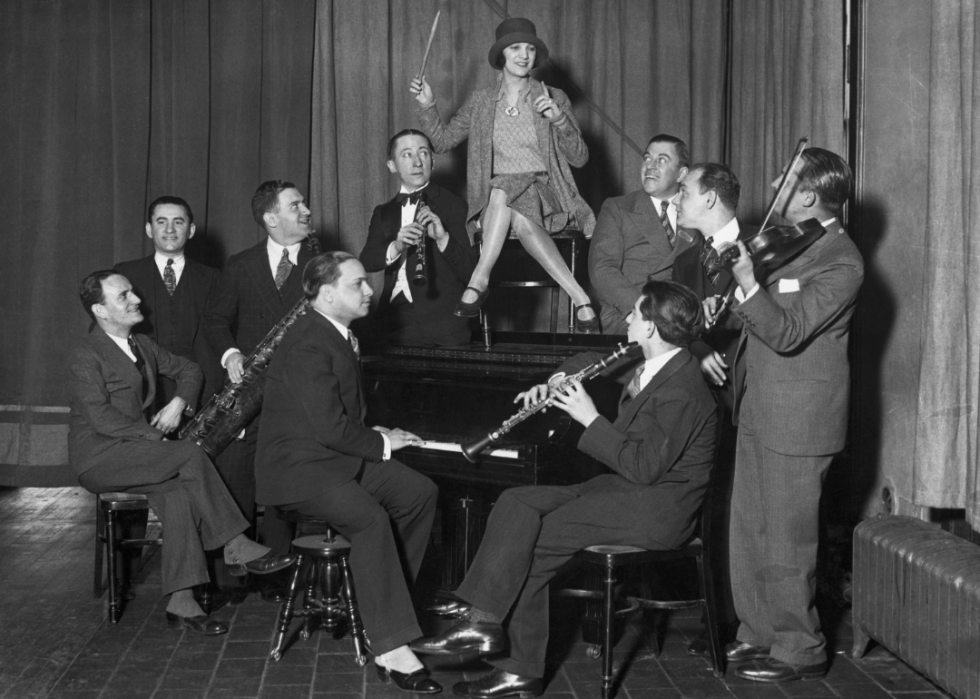
iv / 50
"Alabama Jubilee" by George L. Cobb, Jack Yellen
Despite its incredibly racist lyrics, "Alabama Jubilee" has been considered an American standard since its release in 1915. The upbeat song tells the story of an African American ring preparing for a concert. In 1981, an instrumental version past Roy Clark won the Grammy Honour for Best Country Instrumental Performance.
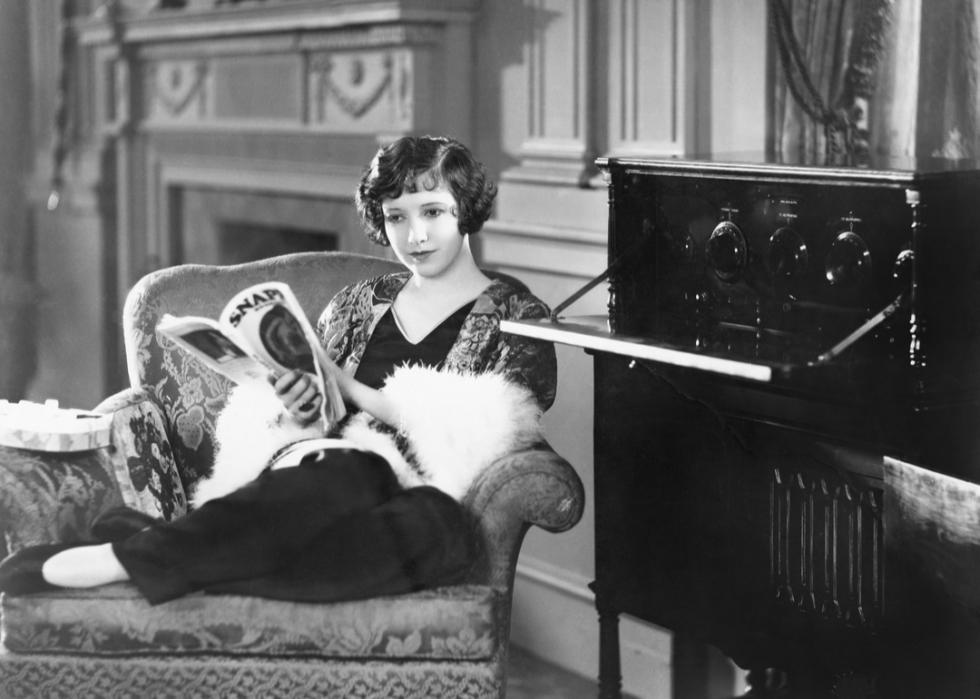
5 / 50
Everett Collection // Shutterstock
"Considering" by Guy d'Hardelot, Edward Teschemacher
The overwhelming majority of the songs that are currently in the public domain were written past men, though there are a few exceptions. One such example is "Because," a religious song composed past Guy d'Hardelot (the pen proper name of Helen Rhodes, a French composer and pianist). Edward Teschemacher re-wrote the words in 1902 when the song was released to English-speaking audiences.
You may besides like: 50 ways music has inverse in the final 50 years
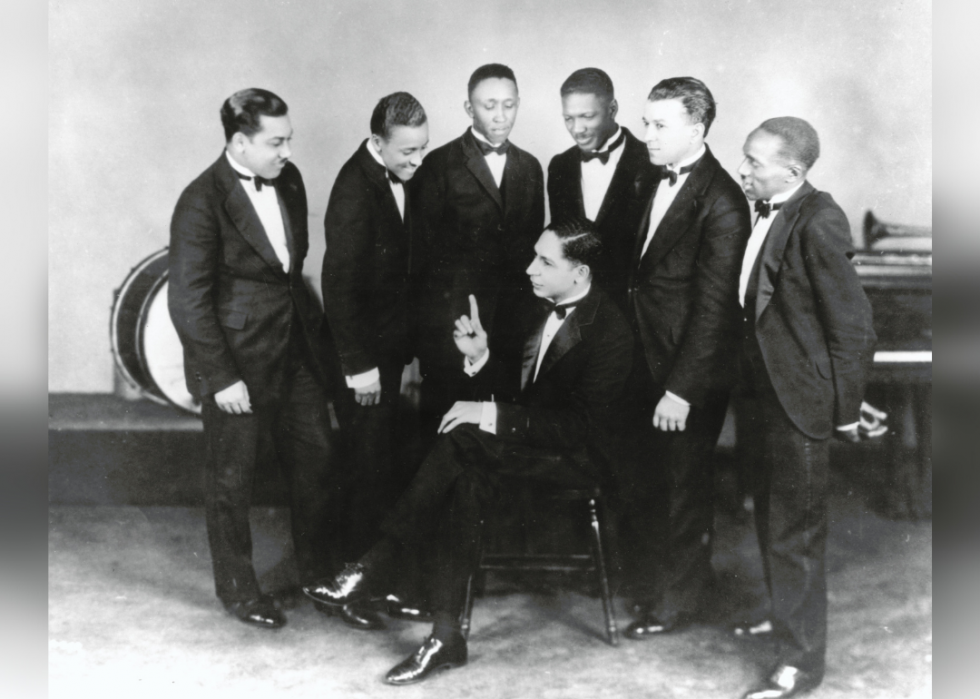
6 / 50
Michael Ochs Archives // Getty Images
"Jelly Curlicue Blues" past Jelly Roll Morton
Though the song "Jelly Ringlet Blues" may not be easily identifiable, information technology's an important part of American music history as it was the first jazz song to be published as sheet music. Upward until that signal, jazz musicians had refused to put their standards down on newspaper equally the genre thrives on improvisation. The publication of this tune proved that the pieces could be printed without risking a loss of class, which immune jazz musicians across the country to learn the foundations of many different songs and the basis of a canon to begin to class.
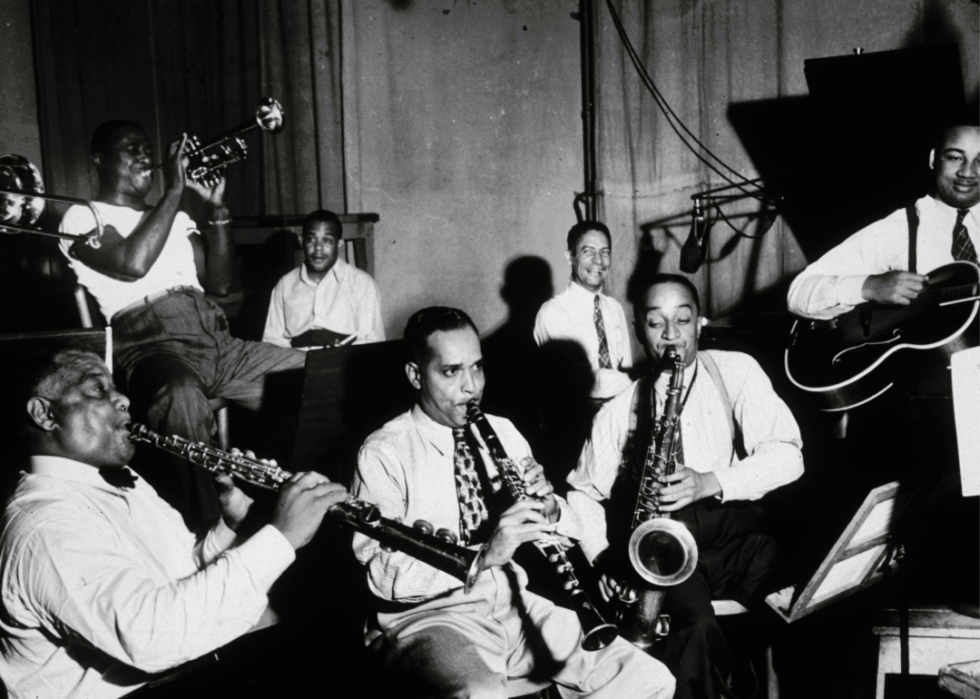
vii / 50
Charles Peterson/Hulton Annal // Getty Images
"King Porter Stomp" by Jelly Curlicue Morton
Providing the foundation for every Big Band's swing repertoire, "King Porter Stomp" is 1 of the nigh foundational and essential pieces of music in modern-day jazz. Another Jelly Roll Morton arrangement, the song contains influences from musical traditions ranging from African to Mediterranian, and classical to marching ring.
[Pictured: American jazz clarinetist Sidney Bechet (1897 - 1959) plays with other musicians at Jelly Coil Morton's last Victor recording session in September 1939.}
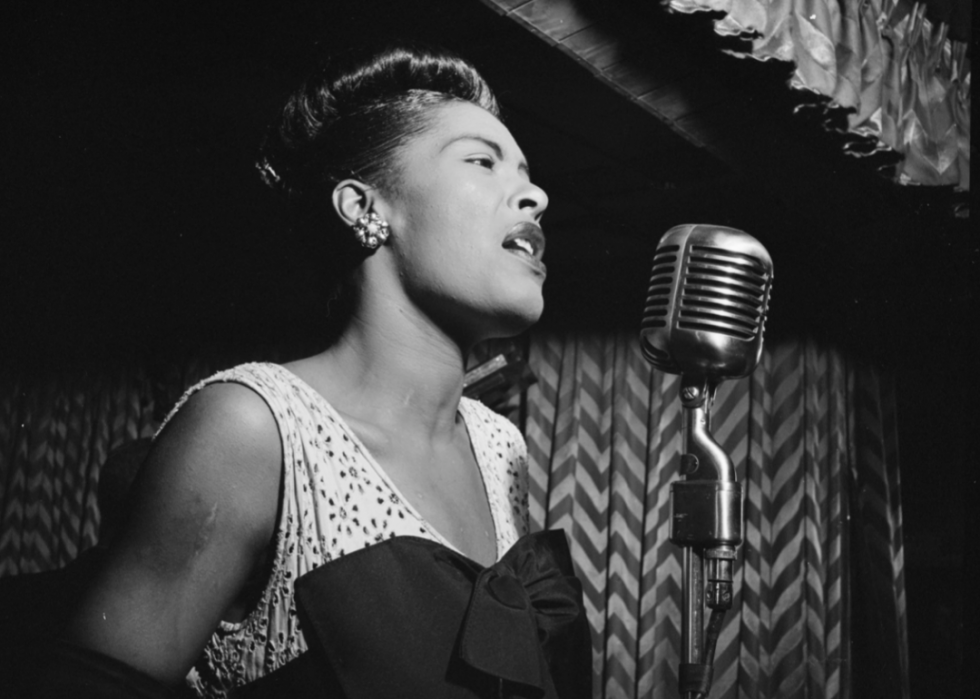
8 / fifty
William P Gottlieb // Library of Congress
"It Had to Be Yous" by Isham Edgar Jones, Gus Kahn
I of the nigh enduring ballads on our listing and currently in the public domain, "It Had To Be You" is about an individual realizing that despite all of their partner's faults there's no one else they could have always been with. Dozens of high-profile artists accept recorded the vocal over the intervening decades, including Billie Holiday, Bing Crosby, Doris Twenty-four hour period, Ella Fitzgerald, Tony Bennett, and Barbra Streisand.
[Pictured: Billie Holiday at the Downbeat in New York, February 1947.]
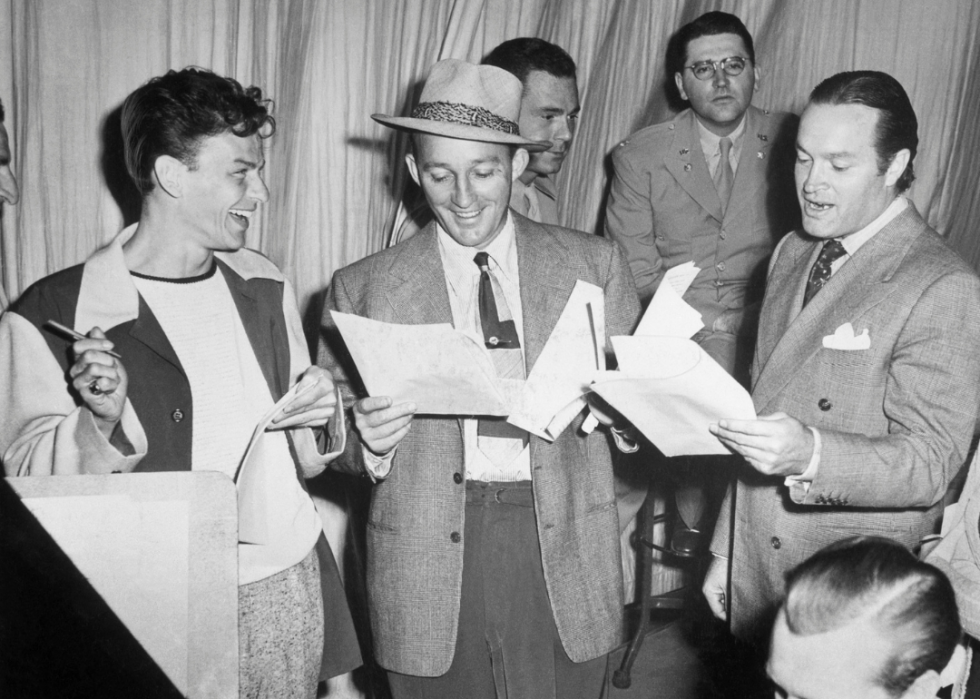
nine / 50
John Springer Collection/Corbis via Getty Images
"McNamara'south Band" past Shamus O'Connor, John J. Stamford
A St. Patrick's Day staple, "McNamara's Band" was written by a Belfast theater managing director for the theater'south owner, music hall veteran Billy Ashcroft, every bit a comedic, Irish character routine. Reportedly, the vocal is based on a real Fife and Pulsate band, though the cultural stereotypes were played upwards for laughs. The near famous version of the song is by Bing Crosby, which was recorded in 1945.
[Pictured: Bing Crosby and Bob Hope perform.]
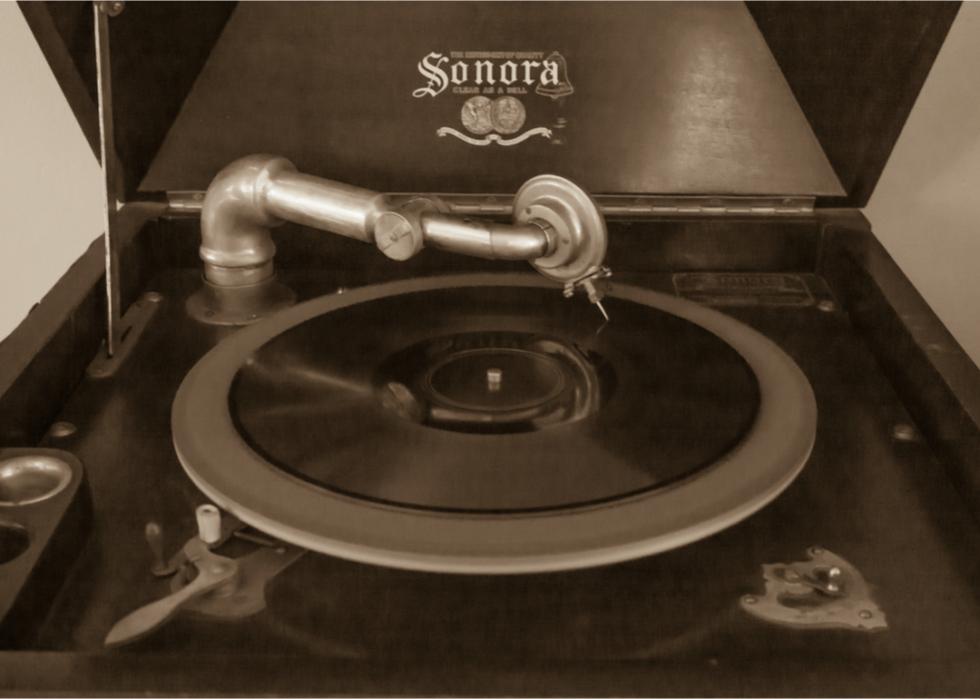
x / fifty
Erin Cardigan // Shutterstock
"Camptown Races" by Stephen Foster
Stephen Foster, the composer of well-known folk songs like "Camptown Races" and "Oh! Susanna," is often referred to every bit the father of American music. This particular song of his, about a group of pre-Civil War transient workers who are betting on horses in an attempt to pocket a little actress money, was written specifically for minstrel shows. In these racist minstrel shows, white performers would darken their faces and mock the culture and traditions of the Blackness population, hence the use of African American vernacular.
You may too like:The all-time streaming services in 2021
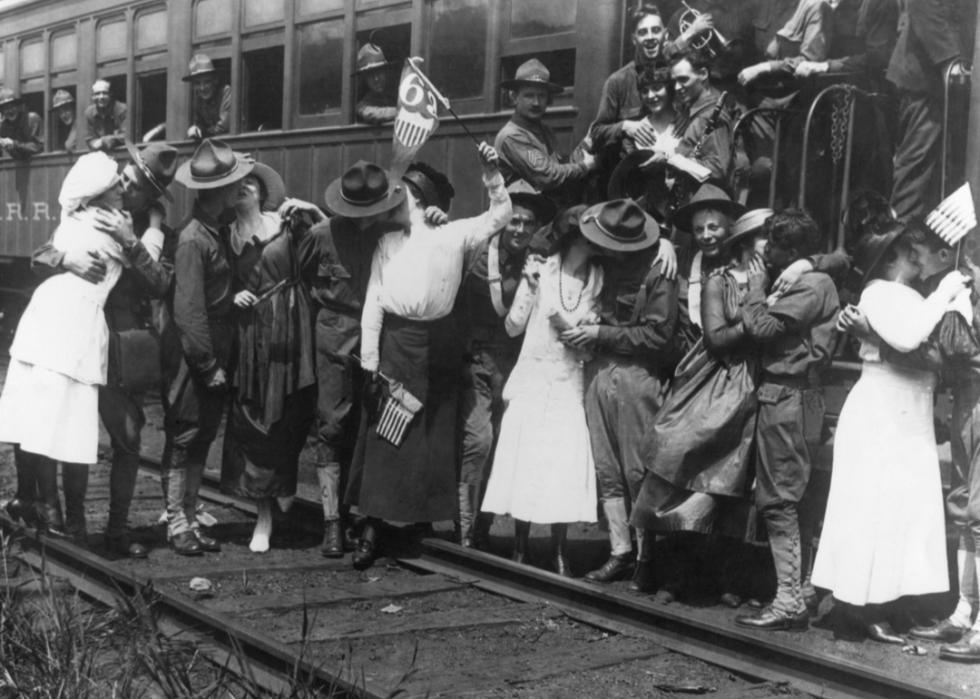
11 / 50
Everett Drove // Shutterstock
"Till We Meet Once again" past Richard A. Whiting, Raymond B. Egan
Perhaps the nearly successful ballad to be written during the Showtime World War, "Till Nosotros Run across Again" is nearly a soldier and his beloved saying goodbye, promising to see again somewhere down the line. An instant striking, five versions of the song charted the yr after its release, and 5 million copies of the sheet music were sold around the world.
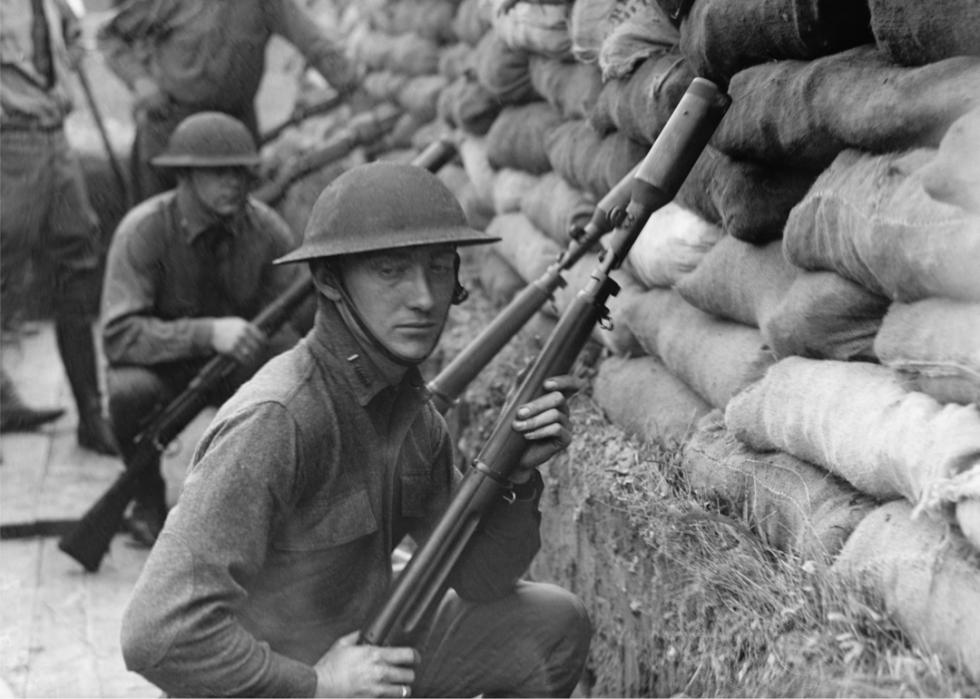
12 / l
Everett Collection // Shutterstock
"There's a Long, Long Trail" by Alonzo Elliott, Stoddard Male monarch
"In that location'southward a Long, Long Trail" is some other hugely popular World War I song. Written by two Yale students in 1913, the song was a marching tune for British, American, and Canadian troops. It didn't fade away at the close of that disharmonize either, gaining a second life in shows similar "One thousand*A*Due south*H," "It'due south the Corking Pumpkin, Charlie Chocolate-brown," and in recordings past artists like Rosemary Clooney and Frank Sinatra.
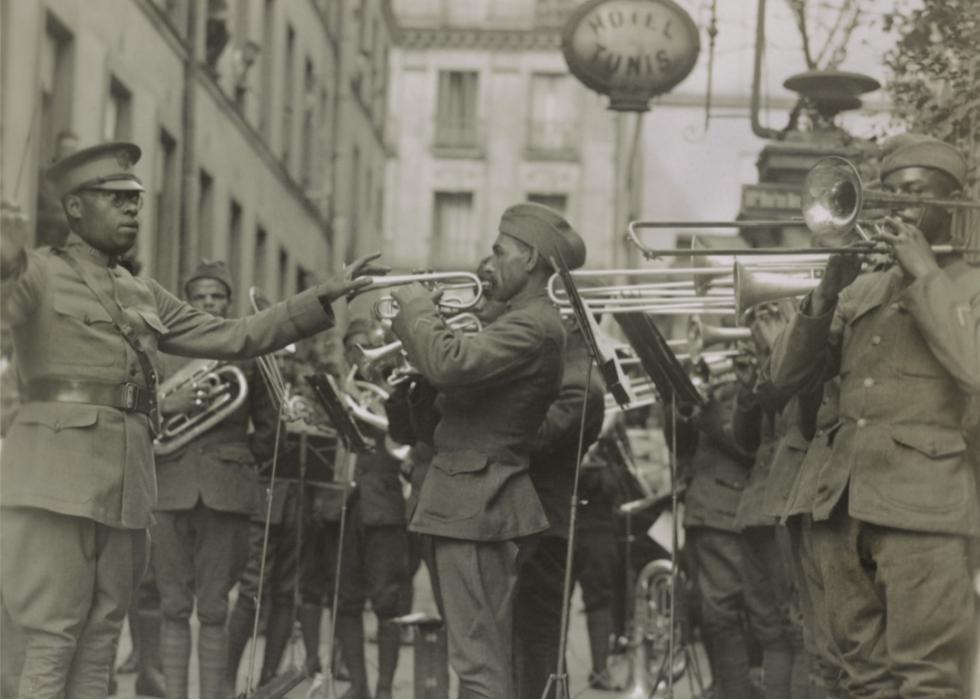
13 / 50
Everett Collection // Shutterstock
"Pack Up Your Troubles in Your Former Kit Bag" past Felix Powell, George Asaf
However another popular marching vocal during WWI, "Pack Up Your Troubles in Your Quondam Kit Bag" was written by brothers Felix Powell and George Henry Powell (under the pen name George Asaf). The song won a Can Pan Alley competition that was explicitly looking for a stirring, morale-building vocal to steady fresh, nervous troops. In the end, merely one blood brother wound up singing the song on the forepart lines while the other became a conscientious objector, dodging conscription.
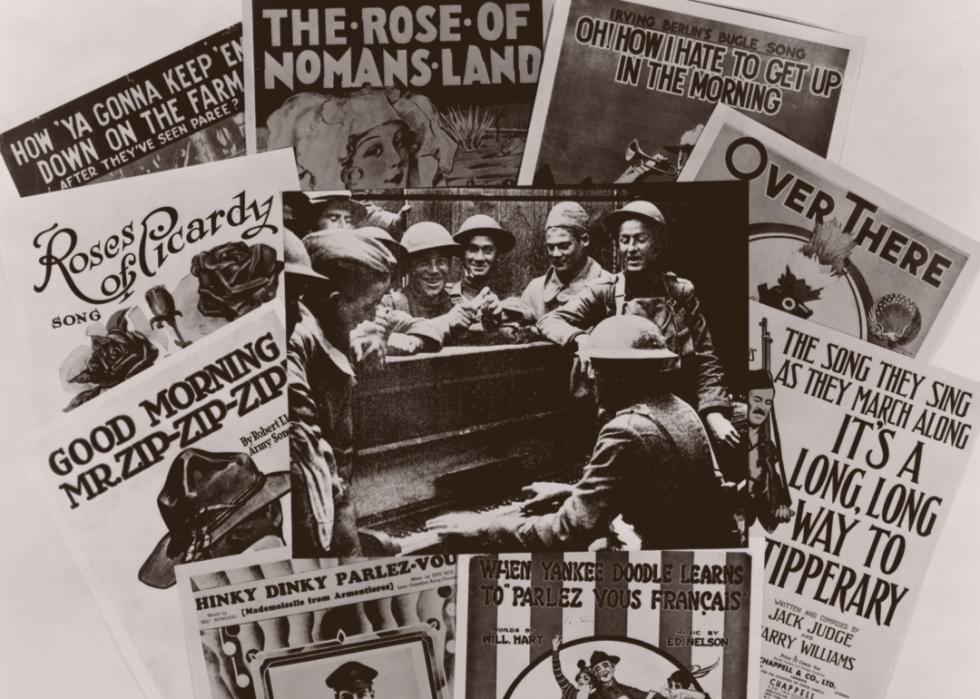
14 / 50
Everett Collection // Shutterstock
"It's a Long, Long Style to Tipperary" by Jack Gauge, Harry H. Williams
"It'southward a Long, Long Manner to Tipperary" was written in 24 hours to either satisfy a bet or win a competition, depending on which version of history y'all believe. As a function of a simultaneous quodlibet, the song has a complementary tune to "Pack Up Your Troubles in Your Erstwhile Kit Handbag" and the two are oftentimes sung in tandem. Every bit a issue, the wildly successful song besides became a popular marching tune for British and Irish troops during WWI.
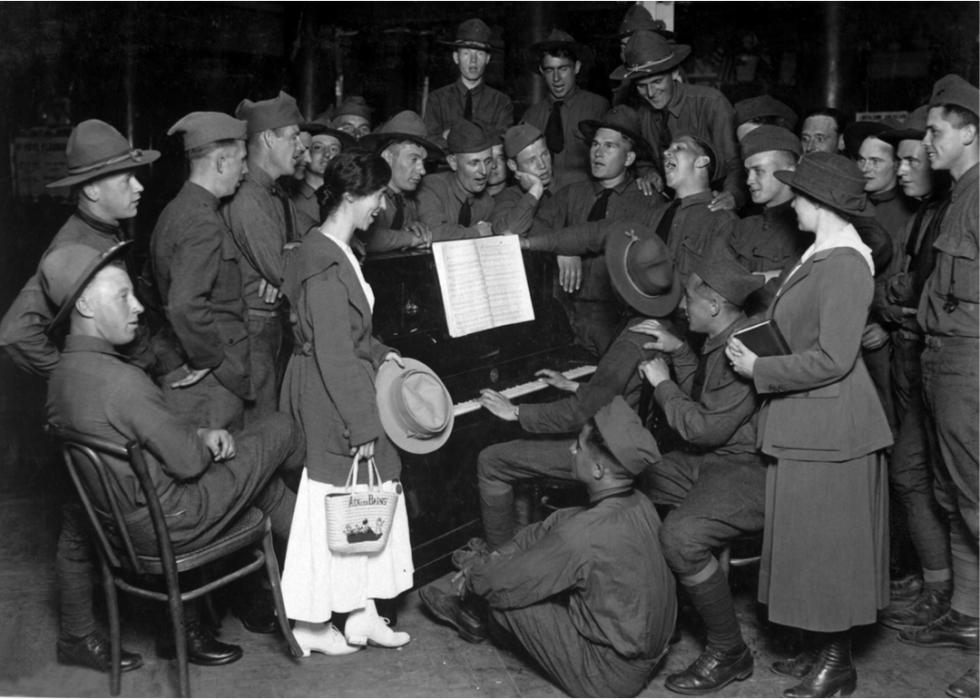
15 / 50
Everett Drove // Shutterstock
"Proceed the Domicile Fires Burning" by Ivor Novello, Lena Guilbert Ford
The final WWI classic on our list is "Keep the Home Fires Burning," a melancholy yet hopeful song about missing our loved ones during wartime. More than i million copies of the sheet music were sold during the height of the state of war, fifty-fifty as money was scarce and budgets for frivolities were minuscule. The song has an enduring cultural touch on, specially in its native Uk, where information technology is still oftentimes used in movies and Goggle box shows about the fourth dimension period.
Y'all may too like: forty Black artists music wouldn't be the same without
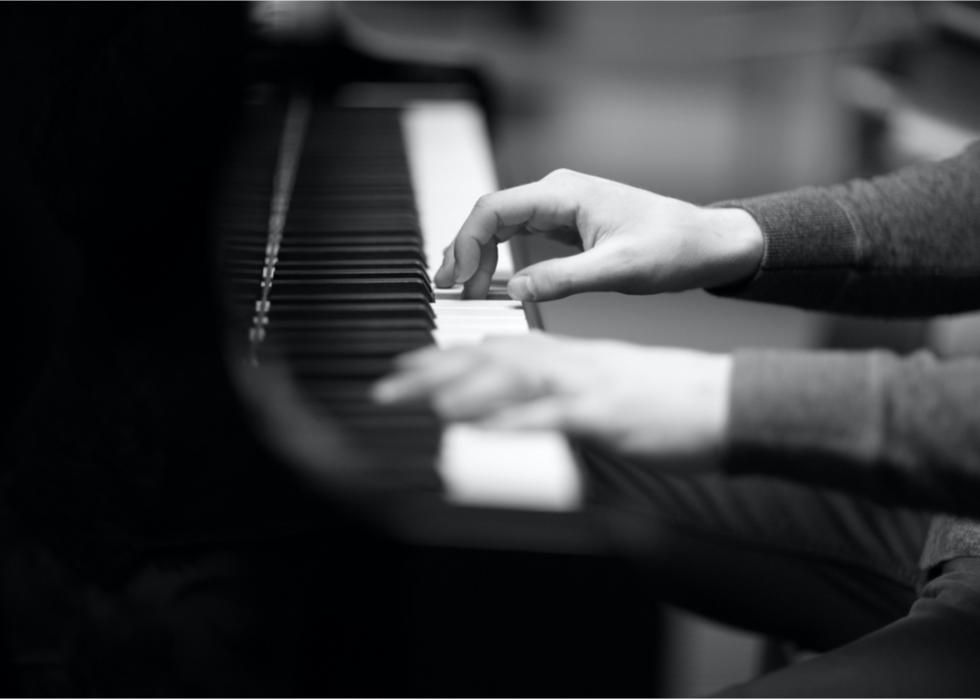
16 / 50
Anna Jurkovska // Shutterstock
"Casey Jones" past Eddie Newton, T. Lawrence Seibert
Over the years, the lyrics to "Casey Jones" accept changed a number of times, but the vocal'southward cardinal story—the existent-life tale of a railroad engineer who gave up his life in a train crash in order to avoid even more fatalities—has remained the same. It's thought that the starting time version of the song was written by a friend of Jones, but it was Eddie Newton and T. Lawrence Seibert's version that was first copyrighted. The melody, which was famously covered by Johnny Cash, has established the real Jones as a folk hero.
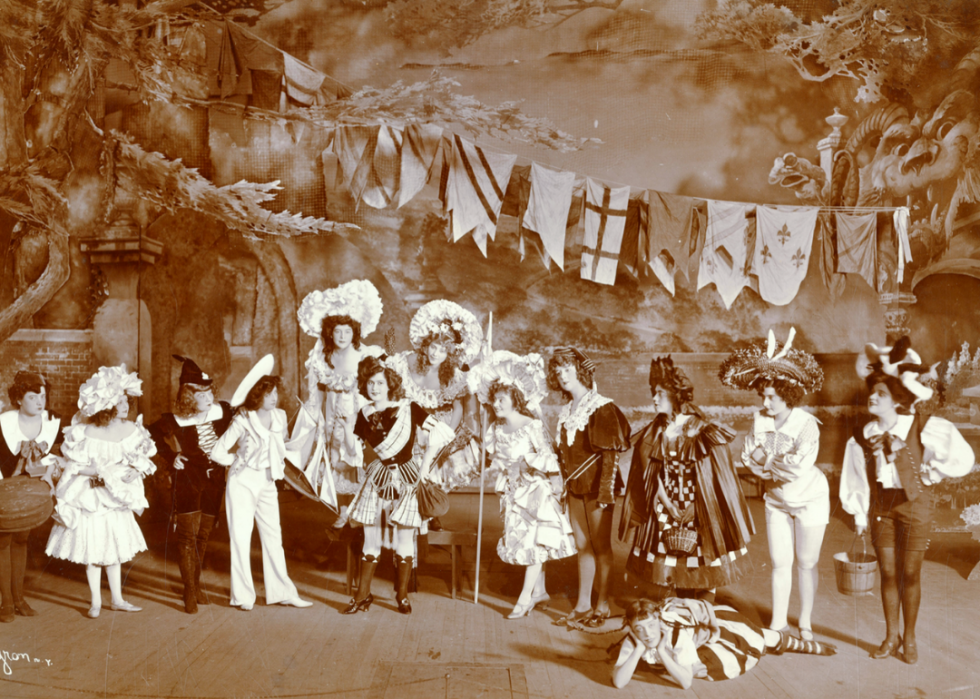
17 / fifty
Joseph Byron // Wikimedia Commons
"Toyland" by Victor Herbert, Glen MacDonough
Irish-American composer Victor Herbert wrote the song "Toyland" equally the piece de resistance for his almost successful operetta, "Babes in Toyland." The original song is reflective and about mournful, a sharp contrast to the upbeat march many of us remember for the 1961 Disney accommodation.
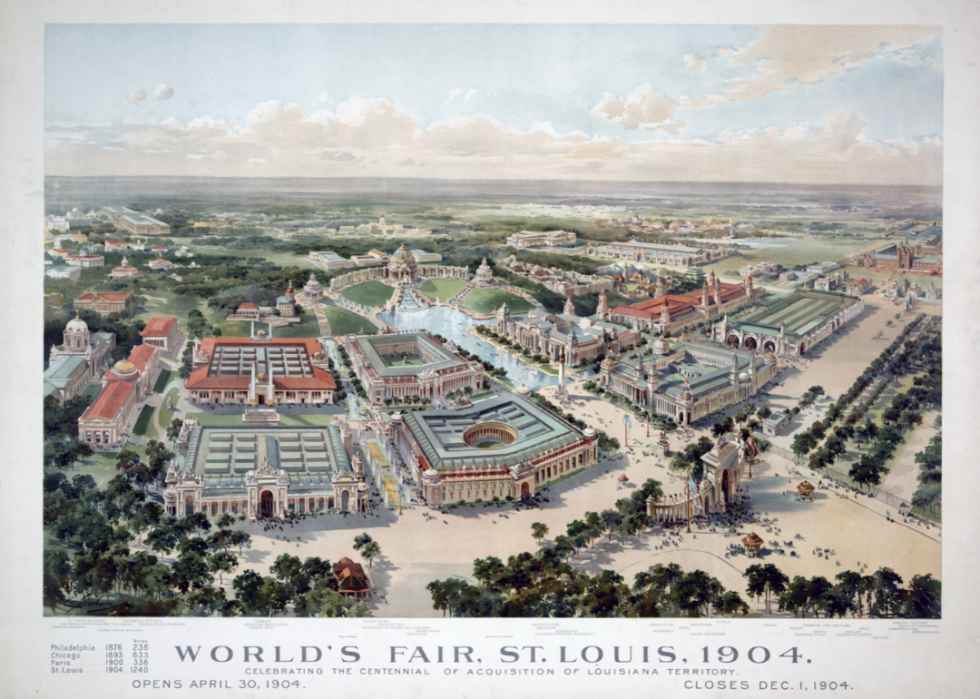
18 / 50
Gray Lithographic Company // Wikimedia Commons
"Meet Me in St. Louis, Louis" by Kerry Mills, Andrew Sterling
Described as a comic flit with a gaggle of actress verses, "Meet Me in St. Louis, Louis" was the unofficial anthem of the 1904 World's Fair, which was held in St. Louis, Missouri. The ditty became the basis for the musical picture show "Come across Me in St. Louis" starring Judy Garland.
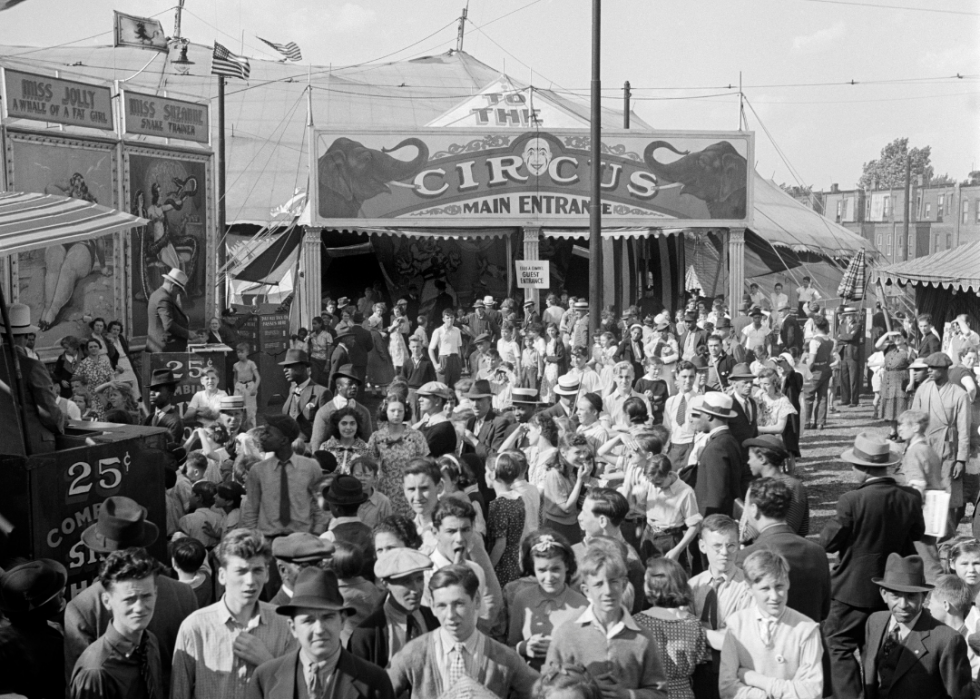
19 / 50
H. Armstrong Roberts/Classic Stock // Getty Images
"Entry of the Gladiators" by Julius Fucik
If you've ever been to a circus information technology'south likely that y'all've heard Julius Fucik's "Entry of the Gladiators," or at least a version of it. The vocal utilizes chromatic scales to get its distinctive audio and was i of the start to use newfangled brass instruments on such a large calibration.
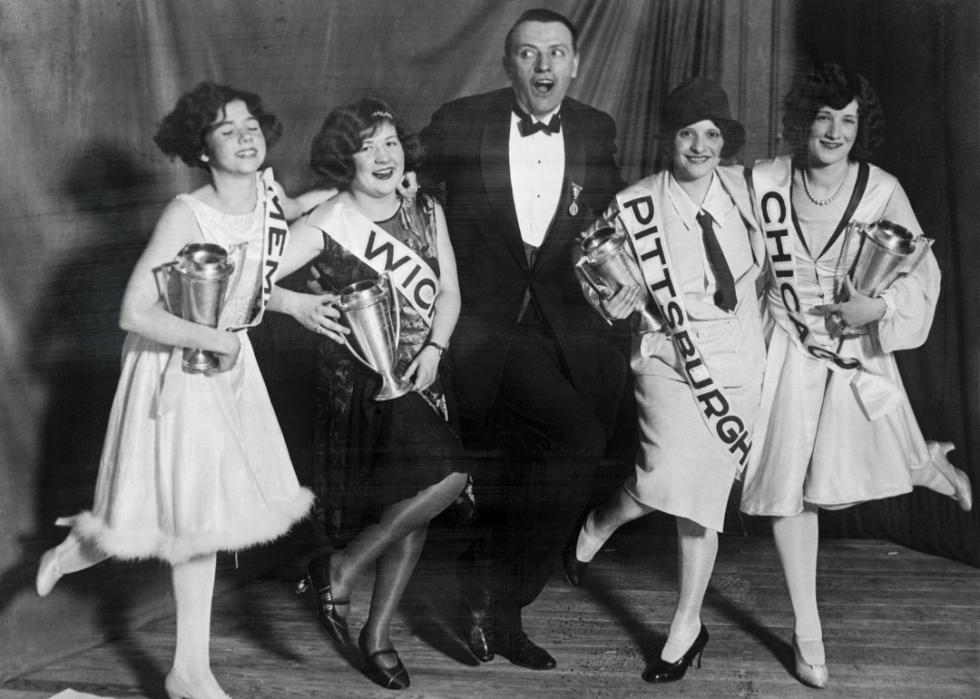
20 / 50
"Charleston" by Cecil Mack, Jimmy Johnson
First actualization in the 1923 Broadway evidence, "Running Wild," the song, "Charleston," was equanimous for the sole purpose of existence played during a brand new trip the light fantastic toe called the Charleston. While the dance did exist first, this song increased its popularity and brought it to new heights.
You may also like: 50 of the best albums past LGBTQ musicians
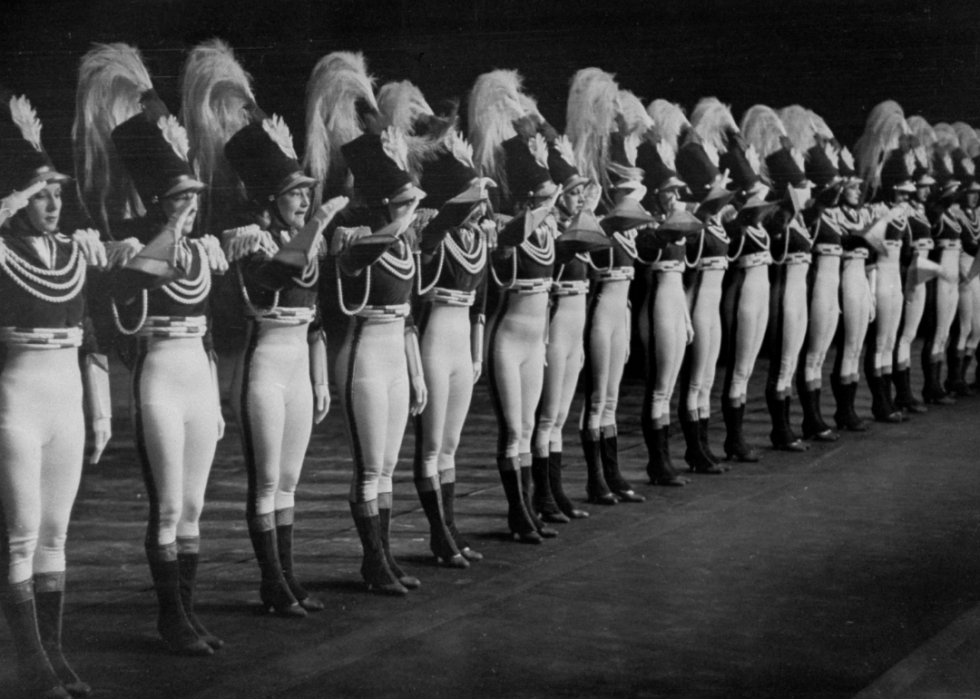
21 / 50
George Karger // Getty Images
"Parade of the Wooden Soldiers" by Leon Jessel
A sprightly march orchestrated by German composer Leon Jessel mode back in 1905, "Parade of the Wooden Soldiers" is still a popular holiday song more than a century later on. Since its release, the song has been used in everything from Broadway shows to movies, performed in concert halls around the earth, and become a staple in the Radio City Music Hall Rockettes Christmas Spectacular.
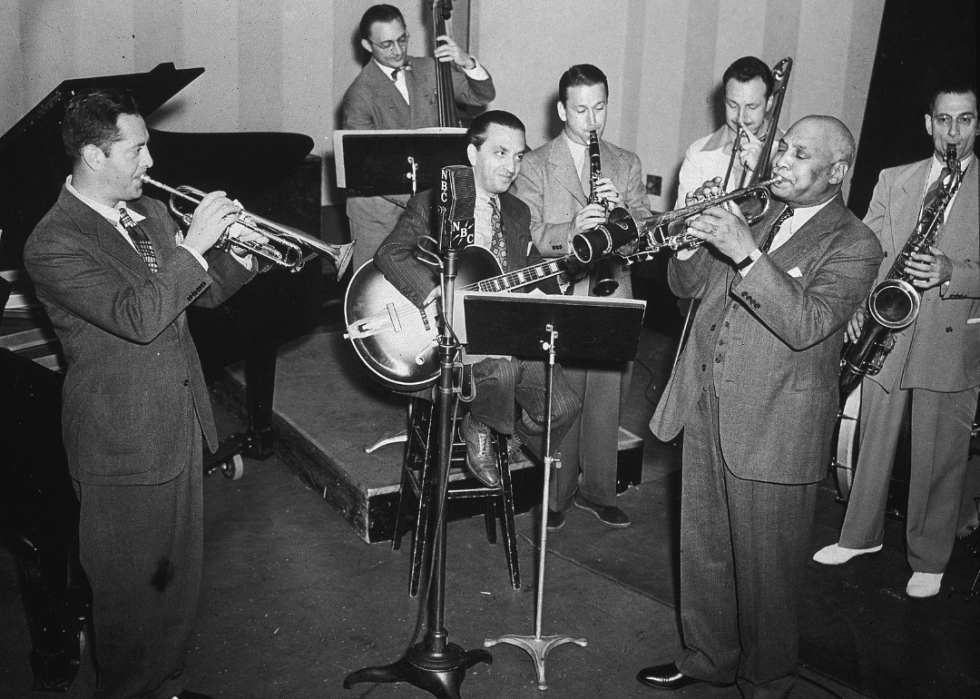
22 / 50
Metronome // Getty Images
"Beale Street Dejection" past Westward. C. Handy
Due west.C. Handy, known as the Father of the Blues, is the creative mastermind backside the 1917 hit "Beale Street Blues." The song takes its proper noun from a street in Memphis that makes up the main drag of the Black amusement district and served as a sort of bye from Handy, who was leaving his longtime home to move to New York Metropolis and Tin Pan Alley.
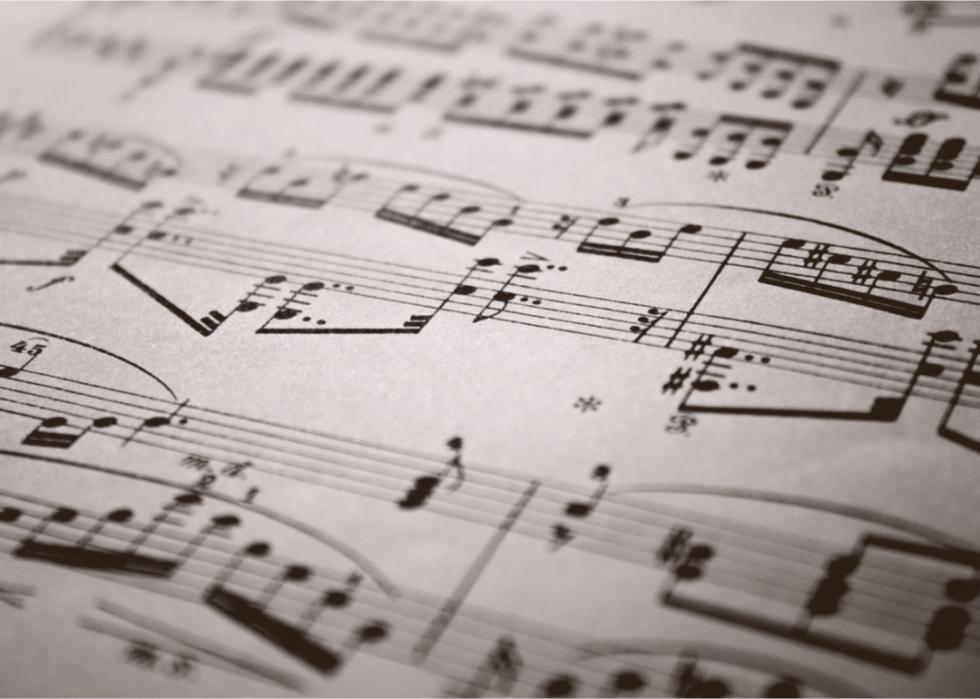
23 / l
Wongsiri Subhayon // Shutterstock
"Old Rugged Cross" by George Bennard
The hymn, "Onetime Rugged Cross," a gospel favorite, has become a staple in the setlists of modern country music artists similar Alan Jackson and Carrie Underwood. The vocal was get-go published back in 1915 past George Bennard, who was inspired to write information technology after attending a number of revival meetings.
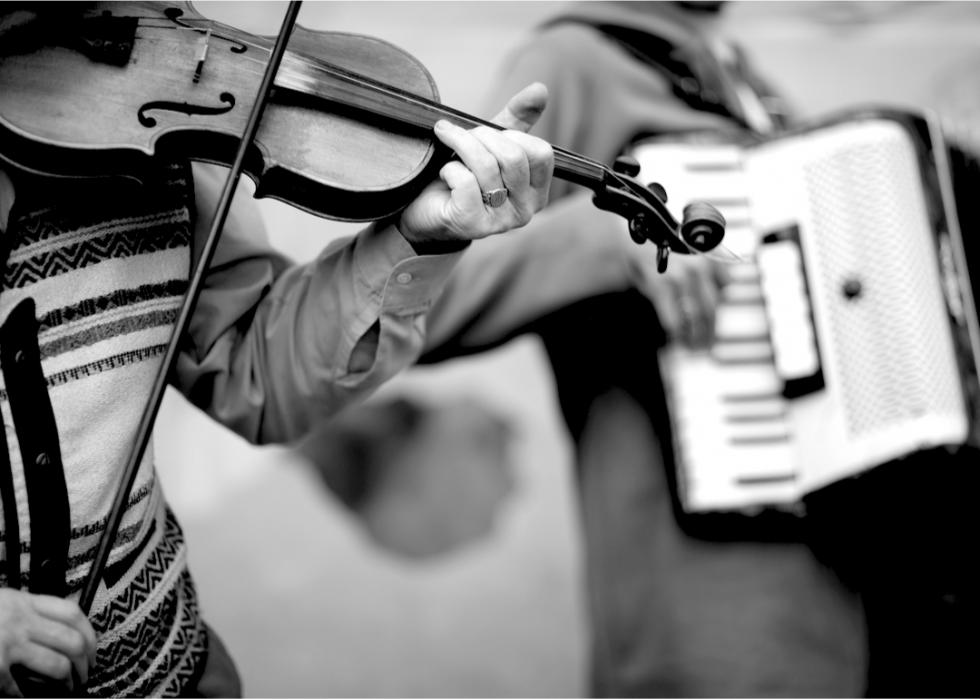
24 / 50
Anna Jurkovska // Shutterstock
"Turkey in the Straw" by Unknown
A dabble tune that dates back to at to the lowest degree 1834, "Turkey in the Straw" is instantly recognizable to almost Americans, whether they realize it or non, as the ice cream truck jingle. The song has come up under fire in recent years for its overtly racist lyrics and brutal depictions of Black Americans, which led to ice cream brand Skilful Humor collaborating with Wu-Tang Clan vocaliser RZA to create a brand-new, racism-free jingle for their trucks to employ.
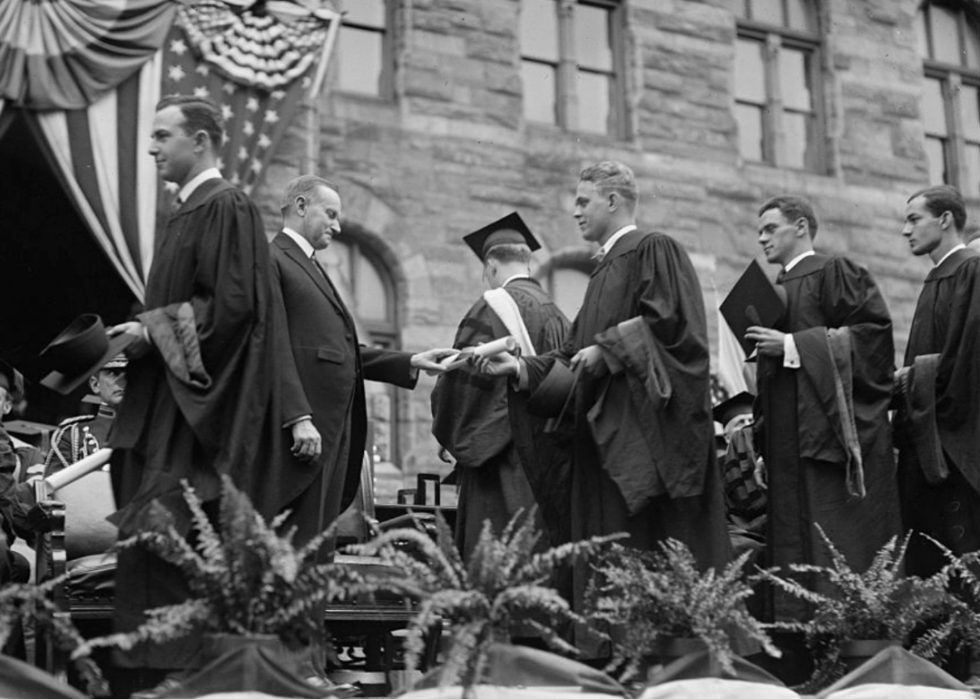
25 / 50
National Photo Visitor Drove // Library of Congress
"Pomp and Circumstance" by Edward Elgar
Now a staple at every graduation, "Pomp and Circumstance" was originally composed for the coronation of King Edward VII in 1901. It made the spring from royal ceremony to scholarly ceremony in 1905 when information technology was played after Elgar received an honorary doctorate from Yale University (though it was then used equally a recessional, not a processional).
You may also similar: The all-time streaming services for sports in 2021
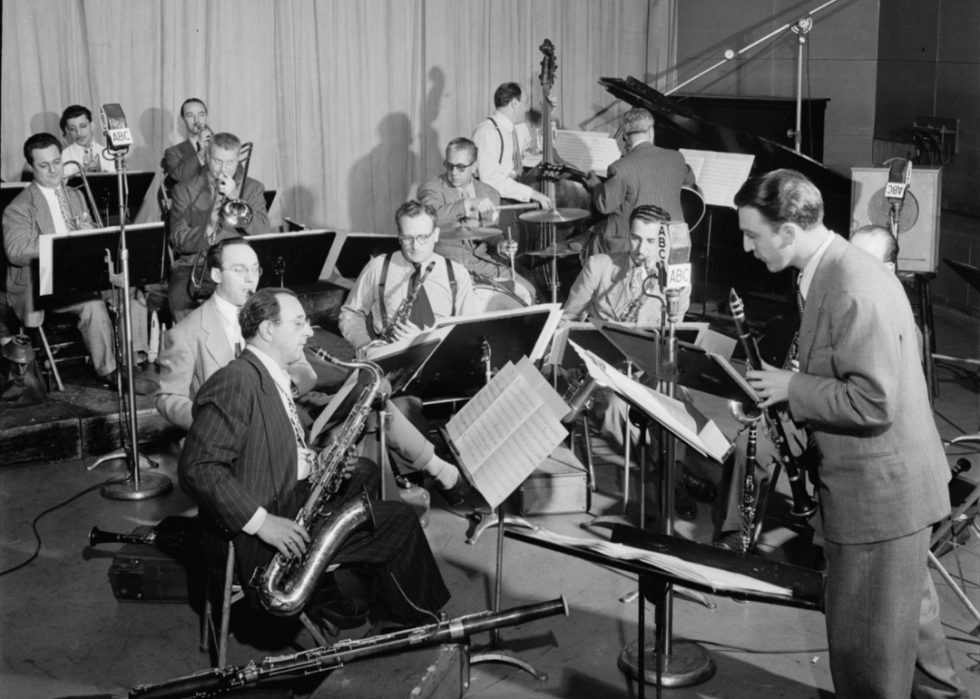
26 / l
William P Gottlieb // Library of Congress
"Christmas Day" by Gustav Holst
At seven minutes long, Gustav Holst's "Christmas 24-hour interval" is i of the longest songs on our list. The holiday piece isn't actually a single song, but rather an original mashup of several classic carols including "The Showtime Noel," "God Rest Ye Merry Gentlemen," "Come Ye Lofty; Come Ye Lonely," and "Good Christian Men Rejoice." It remains a popular choral piece, oftentimes performed in year-terminate concerts, to this day.
[Pictured: The Hank D'Amico band in New York City 1947.]
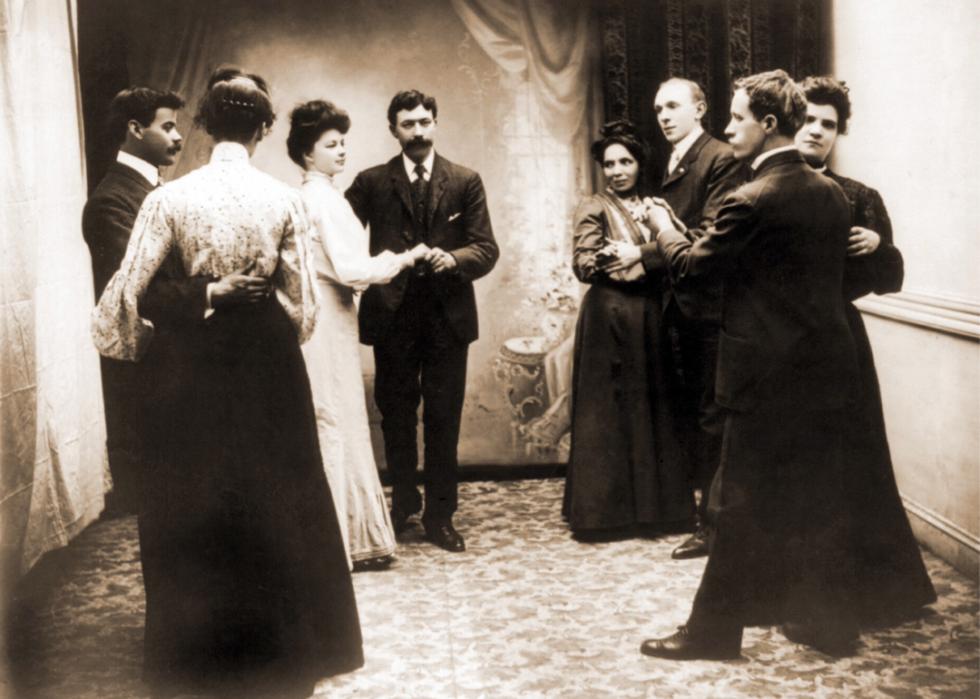
27 / 50
Everett Collection // Shutterstock
"Elsie from Chelsea" past Harry Dacre
A Victorian-era music hall vocal, "Elsie from Chelsea" is about an everyday tram ride around the city of London. It utilizes parody and humor and often invites audition participation from its original listeners.
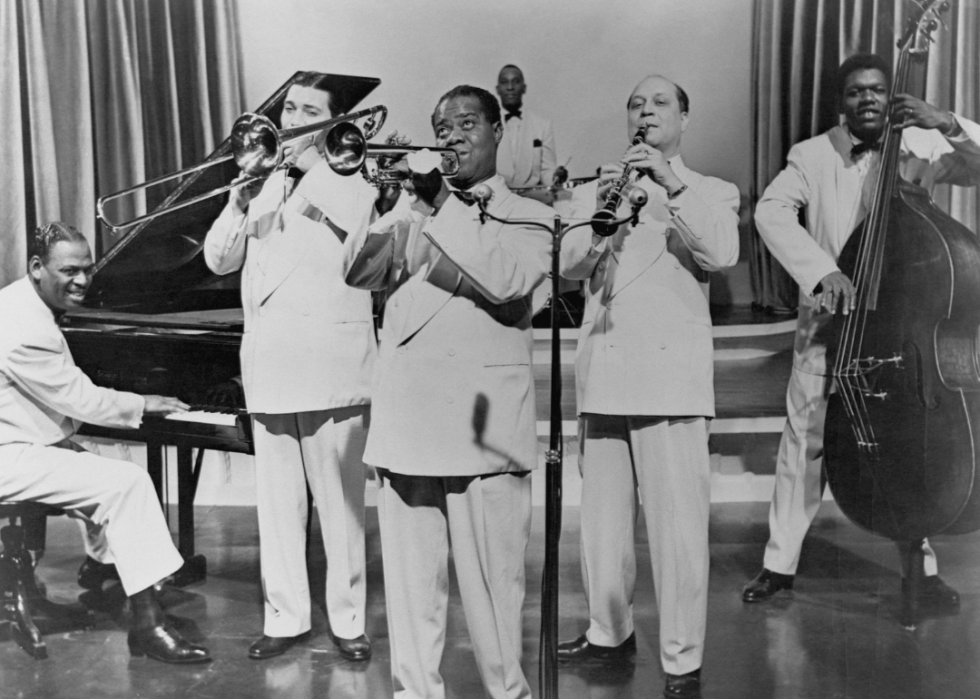
28 / l
"Dearest Onetime Southland" by Turner Layton, Henry Creamer
Turner Layton and Henry Creamer based "Beloved Old Southland" on two African American spirituals—"Deep River" and "Sometimes I Feel Like a Motherless Child"—songs they would have been intimately familiar with. Nine years subsequently they released it, Louis Armstrong and his band recorded information technology and information technology became the massive striking we know today.

29 / 50
Everett Drove // Shutterstock
"By the Waters of Minnetonka" by Thurlow Lieurance
Though he was not Native American himself, Thurlow Lieurance spent a lot of time living among the Sioux Indians and developed a beloved for the culture and its sociology. A huge proponent of the Indianist movement in American music, Lieurance wrote his almost famous song, "Past the Waters of Minnetonka" in this mode. The lilting melody is based on a Sioux legend virtually a brave and maiden who fall in love but are fated to dice for this love thanks to the aboriginal laws of their tribe.
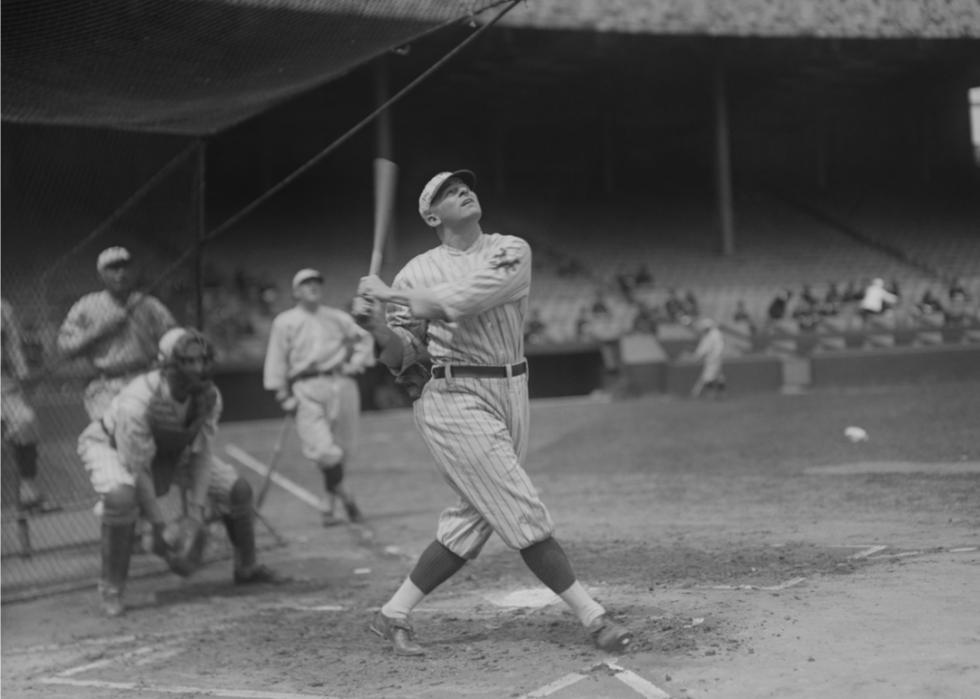
xxx / fifty
Everett Drove // Shutterstock
"Accept Me Out to the Ball Game" by Albert Von Tilzer, Jack Norworth
The third most-frequently sung tune in the Usa, behind only "Happy Birthday" and "The Star-Spangled Banner," "Accept Me Out to the Ball Game" was written past two vaudeville stars in 1908. Neither human was an avid baseball game fan, and in fact, prior to writing the song neither had ever attended a game. They were inspired by a Manhattan billboard advertising the New York Giants stadium, Polo Grounds. Today, the song (or rather the chorus of the song) is traditionally sung during the seventh-inning stretch at every MLB game.
Y'all may also similar: Nigh famous musician born the same year every bit you
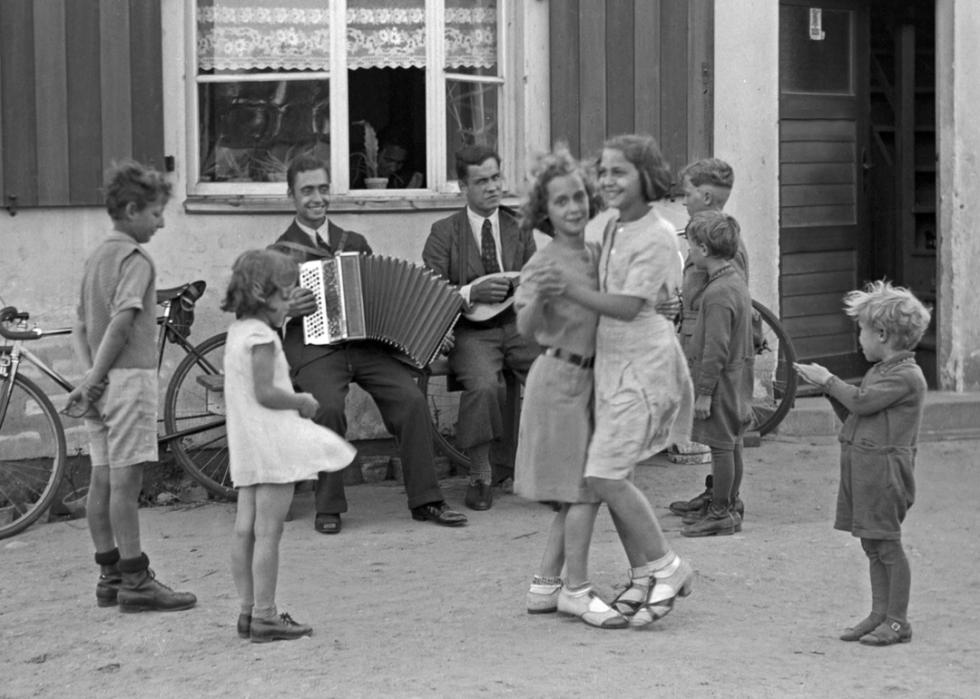
31 / fifty
Everett Collection // Shutterstock
"When Irish Optics Are Grinning" by Ernest Ball, Chauncey Olcott, George Graff
In the 1910s, songs that romanticized both Republic of ireland and its people were incredibly pop in Great Uk and the Us. "When Irish Eyes Are Smiling" is perhaps one of the best, and longest-lasting examples of this blazon of diddy. Though none of its composers or writers could claim any Irish heritage themselves, the vaudeville-esque tune, which has been recorded by the likes of Bing Crosby and Ronan Tynan, remains one of the most beloved tributes to the Emerald Isle.
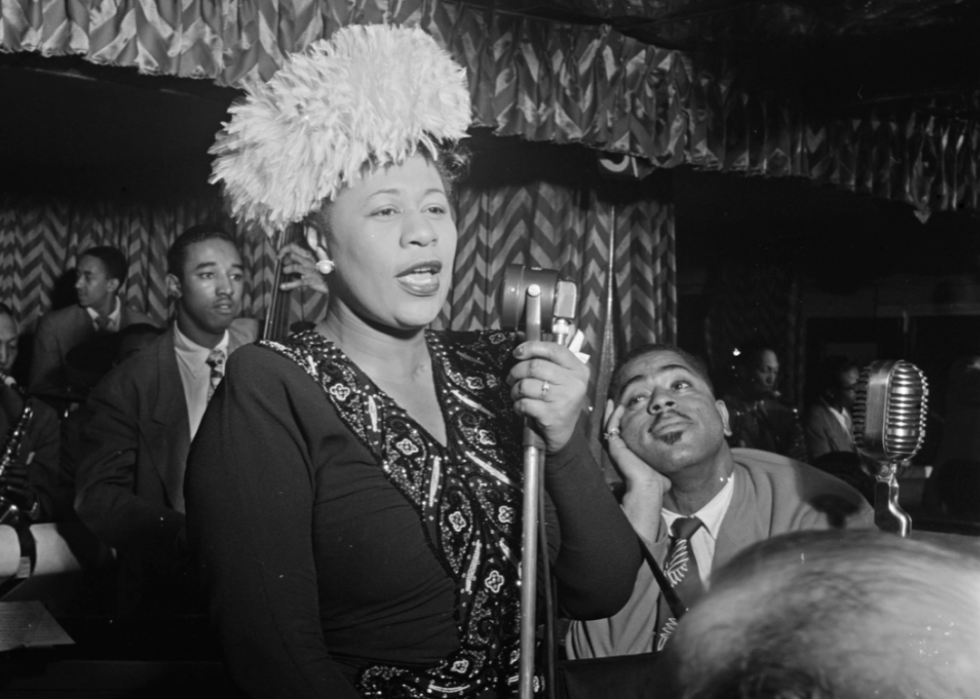
32 / fifty
William P Gottlieb // Library of Congress
"Manhattan" by Rodgers & Hart
Richard Rodgers is one of the biggest figures in American musical theater history, collaborating with other writers on everything from "Oklahoma!" to "The Sound of Music." Ane of his first forays into the musical theater earth was a revue called "The Garrick Gaieties," which he put together with then-partner Lorenz Hart. One of the songs in this revue was "Manhattan," a comedy vocal near a poor young couple trying to make the all-time of their NYC honeymoon despite having no coin.
[Pictured: Ella Fitzgerald, Dizzy Gillespie, Ray Chocolate-brown, Milt (Milton) Jackson, and Timmie Rosenkrantz, Downbeat, New York, circa September 1947.]
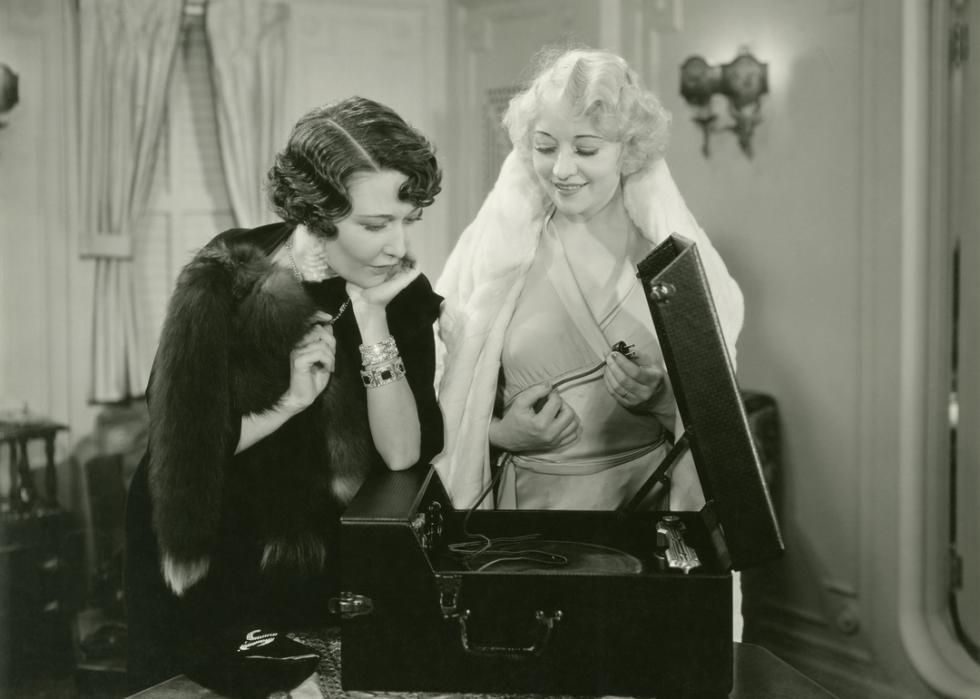
33 / 50
Everett Drove // Shutterstock
"Collegiate" by Moe Jaffy, Nat Bonx
While "Collegiate" may not be as wildly popular today as information technology was back in the 1920s, it still earns a spot on our list thank you to its historical significance. Every bit it turns out, this ditty was the first vocal to ever be recorded electronically (every bit opposed to being recorded with recording horns). Folks loved the new audio provided by this recording style so much that the rail reached #three in the nation the year after it was released.
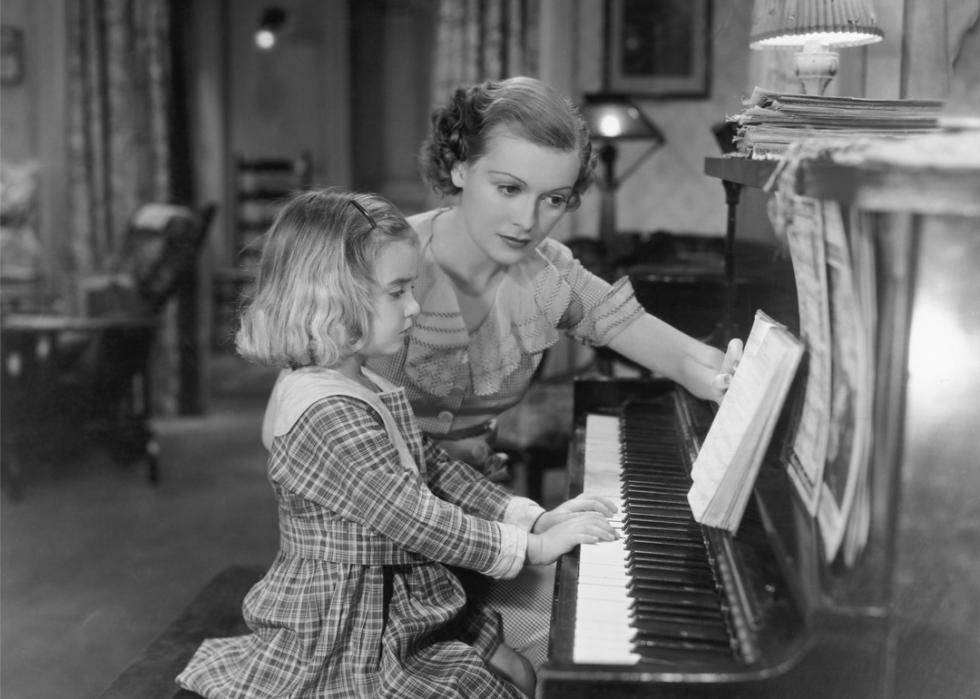
34 / 50
Everett Collection // Shutterstock
"Downwardly in the Valley (Birmingham Jail)" past Unknown
Verbal authorship for the folk song "Down in the Valley (Birmingham Jail)" is disputed, though many believe it was penned by Jimmie Tarlton. To hear him tell the story, he wrote the melody while locked up in the Birmingham Jail on moonshine charges. However, critics believe that he co-opted some other song only called "Down in the Valley" and but changed or added a handful of lines to get in his own.
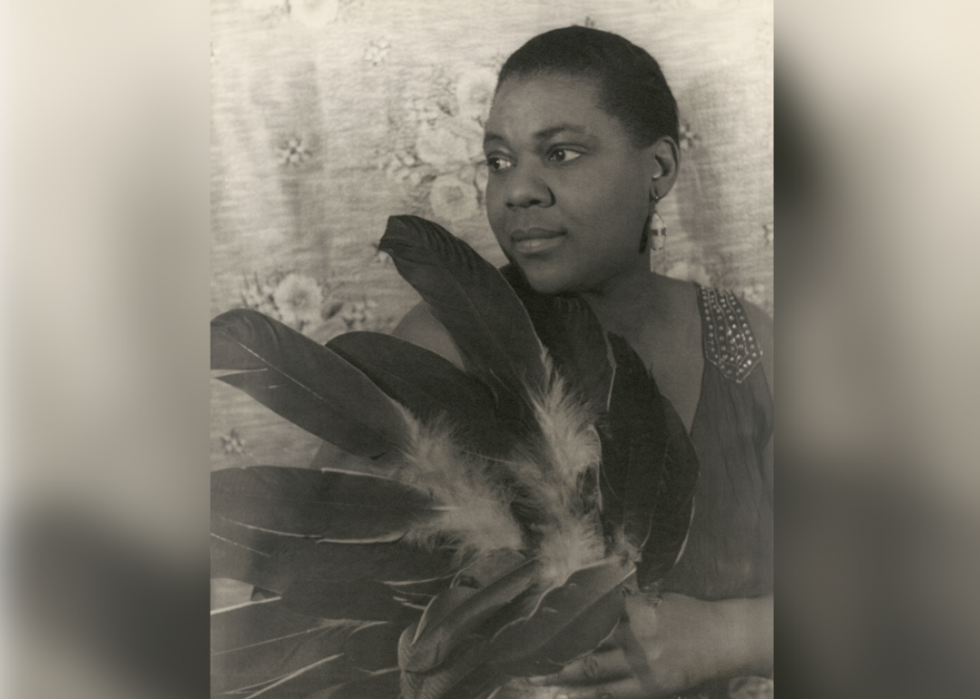
35 / 50
Carl Van Vechten // Library of Congress
"Baby, Won't You Please Come Home" by Clarence Williams, Charles Warfield
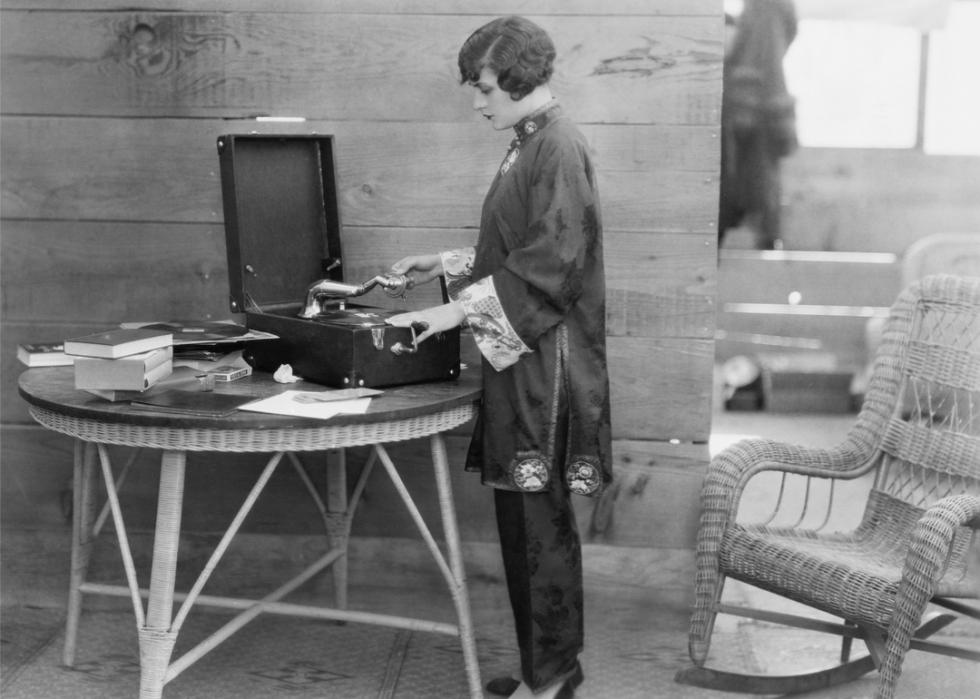
36 / 50
Everett Collection // Shutterstock
"Await for the Silverish Lining" by Jerome Kern, Buddy DeSylva
Some songs fare better in their 2nd lives than their first, which was certainly the example for "Await for the Silvery Lining." Originally written for the flop of a musical, "Zip Goes a Million," the track didn't have any success until it was repurposed for the bear witness, "Sally," and sung by Broadway darling Marilyn Miller. Eventually, the song was recorded by other powerful voices including Judy Garland and Chet Baker.
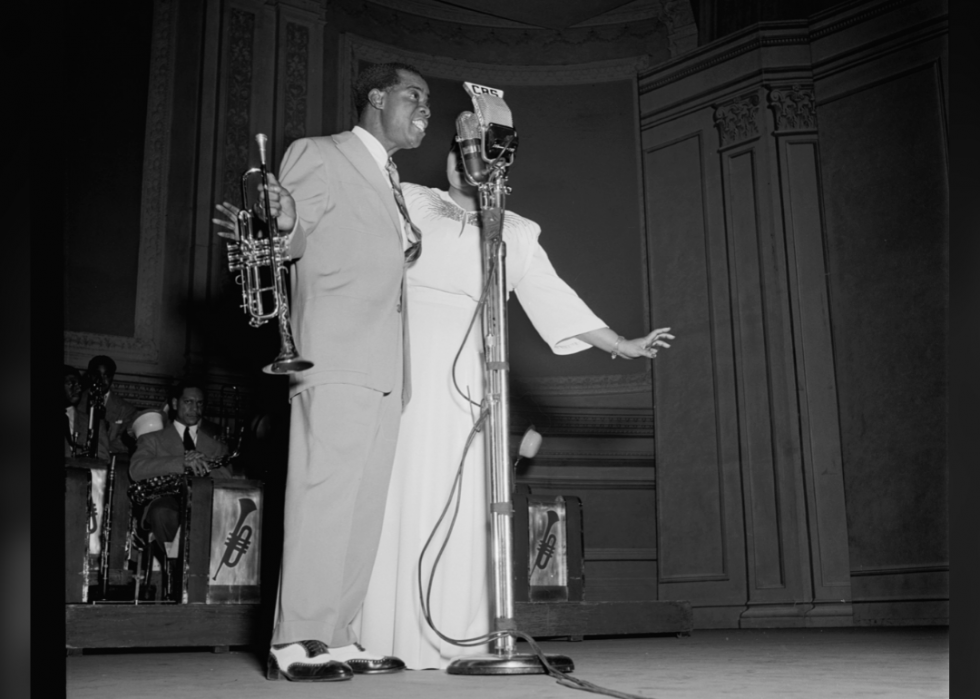
37 / 50
William P Gottlieb // Library of Congress
"Everybody Loves My Infant" by Jack Palmer, Spencer Williams
Jazz is a genre of improvisation, which means very few of the old jazz standards are played exactly the same way today equally they were 100 years agone. "Everybody Loves My Baby" may be the exception to that, at least according to jazz scholars and bloggers. The vocal's well-known lyrics and repetitive melody have led many mod-day bands to hold pretty close to the original recording.
[Pictured: Louis Armstrong and Velma Middleton, Carnegie Hall, New York City, circa February 1947.]
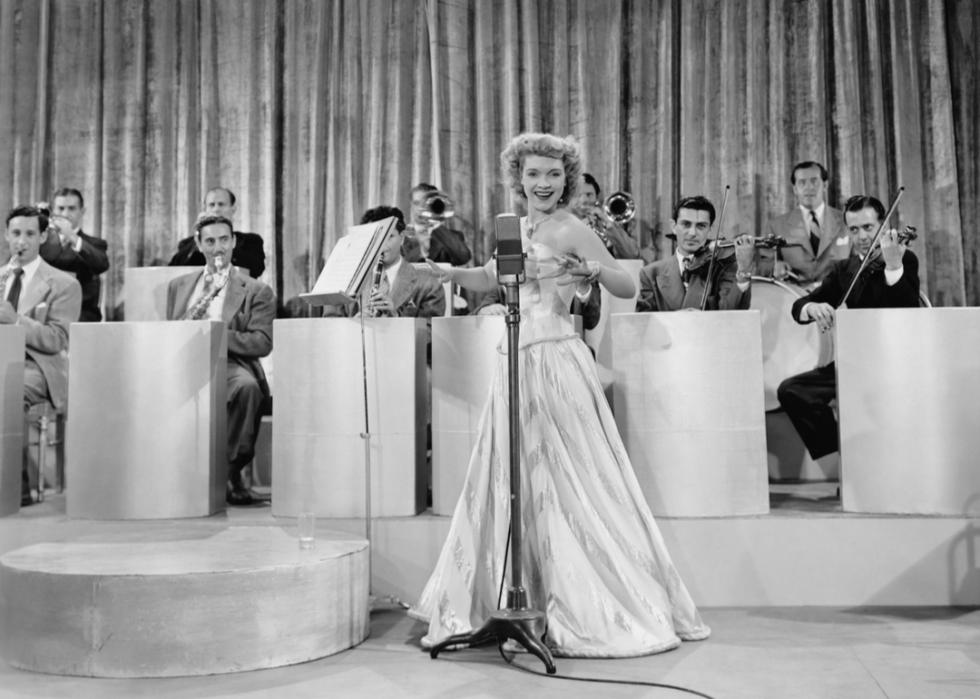
38 / l
Everett Drove // Shutterstock
"Give My Regards to Broadway" by George Grand. Cohan
The vocal "Give My Regards to Broadway" first appeared in the 1904 musical, "Little Johnny Jones." The show was not a striking, but the song was, eventually reappearing in the pic "Yankee Putter Bang-up," a 1942 box office smash well-nigh the life of composer and thespian George M. Cohan. Its upbeat, catchy tempo has fabricated it a perennial favorite with American audiences.
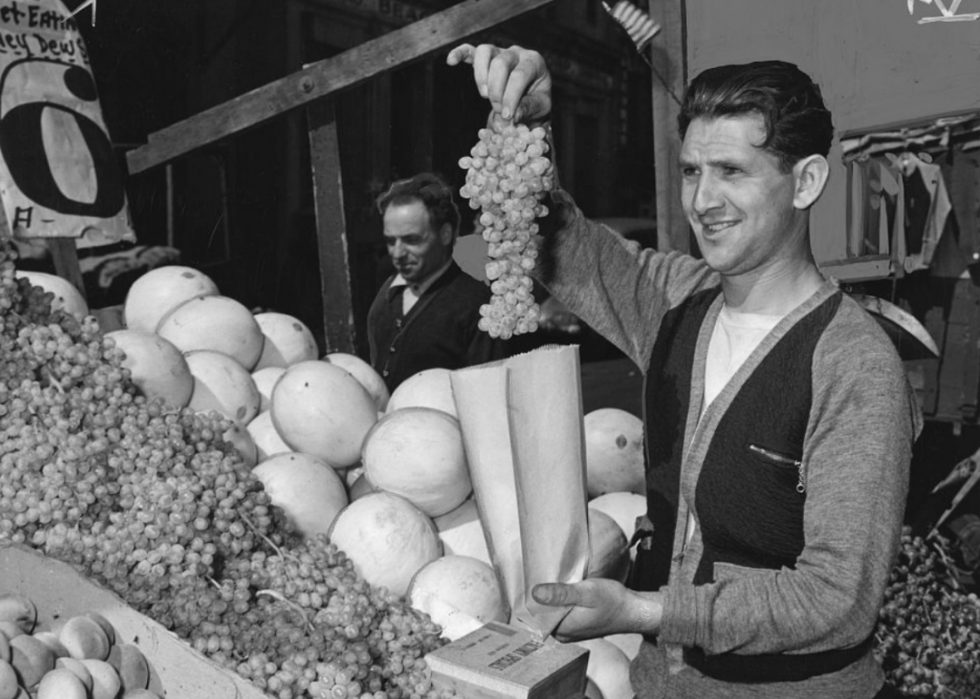
39 / l
New York World Telegram/Sun Newspaper Collection // Library of Congress
"Yes! We Take No Bananas" by Frank Silvery, Irving Cohn
1 of the biggest hits of the 1920s was "Yes! Nosotros Have No Bananas," a novelty song written by Frank Silver and Irving Cohn. The tune is supposedly based on an interaction Silverish had with a Greek fruit seller on his mode to a performance, though that version of events has been contested over the years. The song became so popular that its championship was one of the most widely used phrases in the English-speaking globe for decades.
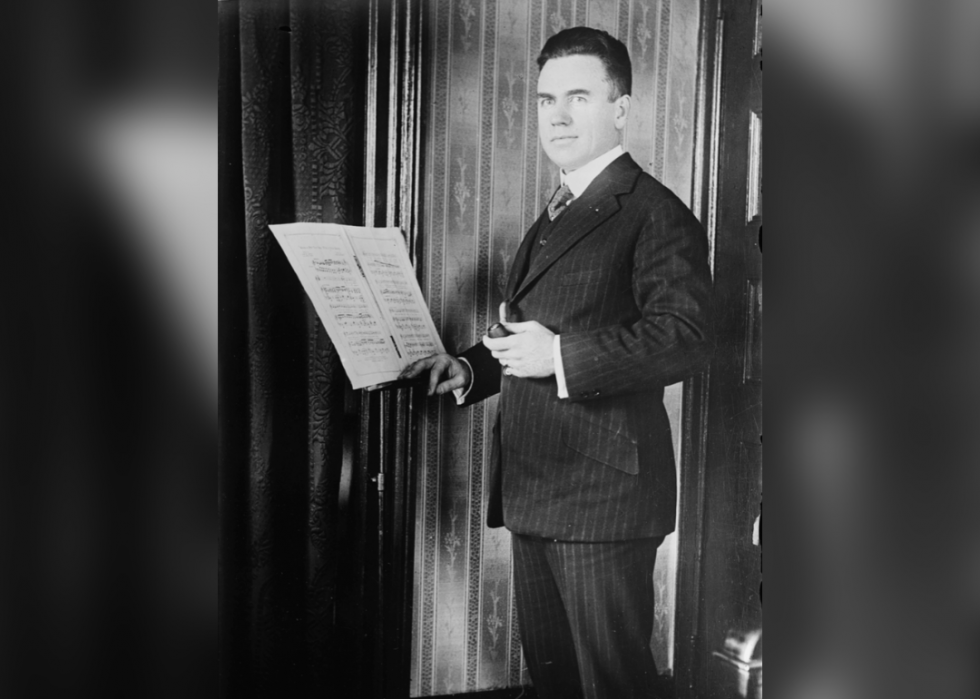
40 / 50
Bain News Service // Library of Congress
"Prisoner's Song" by Guy Massey
The first state music song to sell over a million copies was "Prisoner's Song," which was originally performed by Vernon Dalhart. Despite the fact that it was his vox that made the vocal such an instant success, Dalhart attributed the melody and sheet music to his cousin, Guy Massey, from whom he had starting time heard information technology. It'southward thought that Guy Massey actually heard the song from his brother Robert Massey, who had heard information technology from a young man inmate while serving a jail sentence.
[Pictured: Singer Vernon Dalhart.]
Y'all may also like: 25 musicians who bankrupt barriers
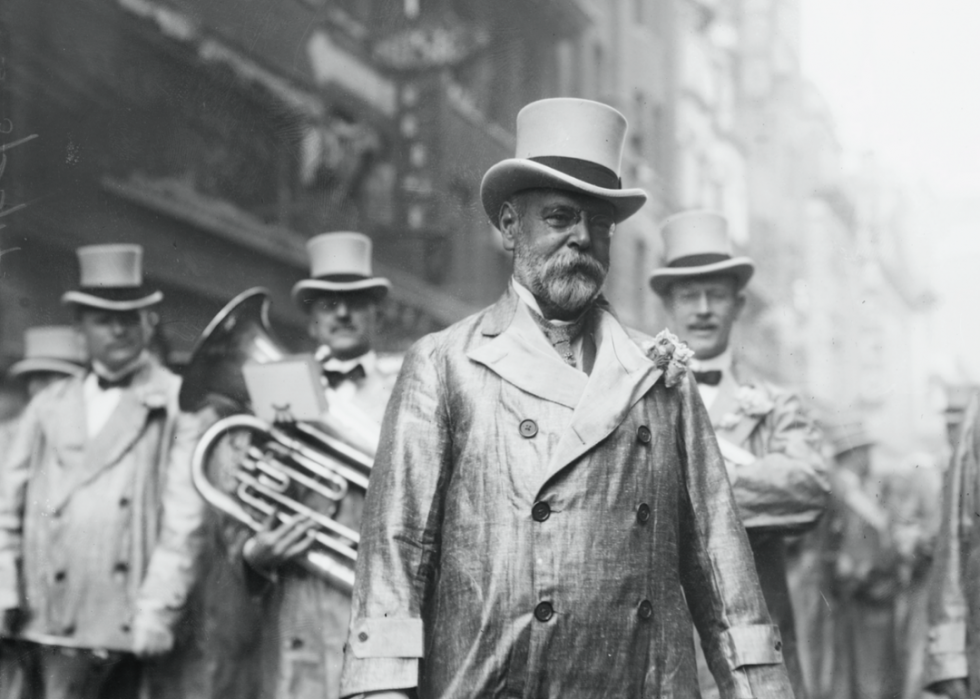
41 / 50
Bain News Service // Wikimedia Eatables
"National Emblem March" by E.E. Bagley
Considered to be 1 of America'south all-time war machine marches, and the only one non written past John Philip Sousa, "National Emblem March" was first published in 1906. Written by a private citizen, and non a member of the military, the march was able to be copyrighted, though Bagley reportedly didn't hang on to the rights for all that long. Today, portions of the song are used when the color baby-sit presents and retires the flag.
[Pictured: Composer John Philip Sousa in front of marching band.]
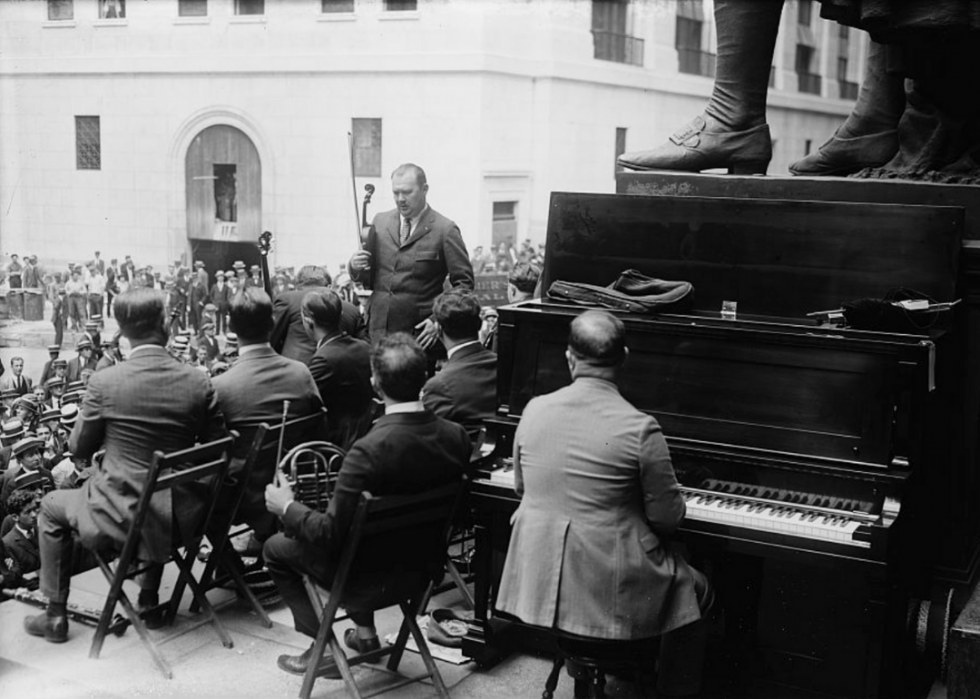
42 / l
Bain News Service // Library of Congress
"Japanese Sandman" by Richard Whiting, Raymond Egan
One of the very kickoff songs to sell over one meg copies of its sheet music was "Japanese Sandman." Described as an escapist song, the tune tells the story of the Japanese Sandman who takes away your old days and replaces them with new ones, assuasive you lot to start life over afresh. Massively popular in the 1920s, the vocal was recorded past both the Paul Whiteman Orchestra and Nora Bayes.
[Pictured: Band leader and recording star Paul Samuel Whiteman (1890-1967) and his band on a temporary stage on the steps of Federal Hall, 26 Wall Street, New York.]
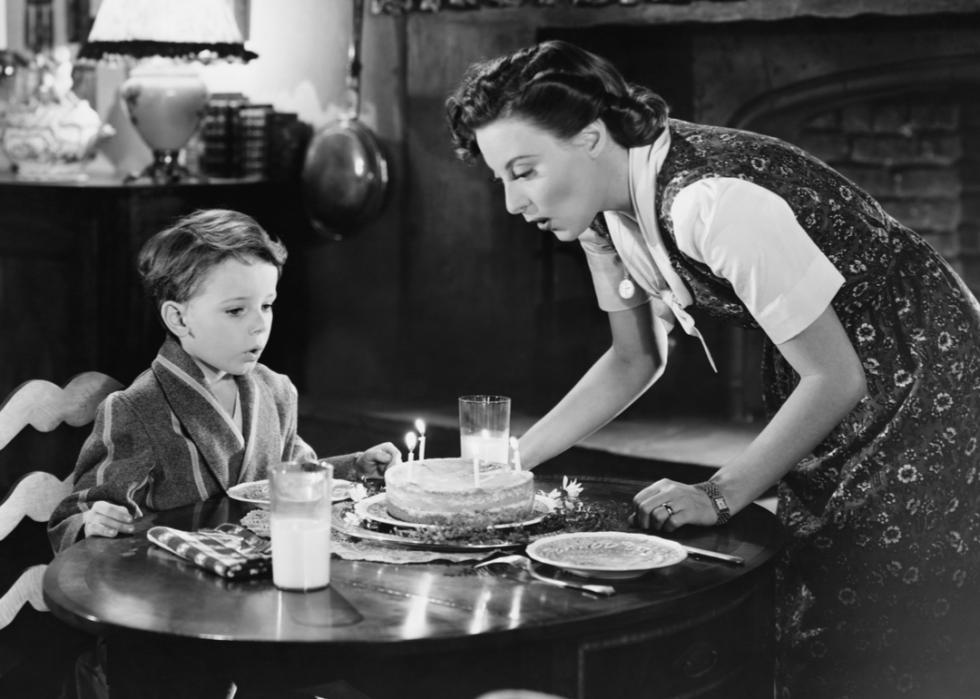
43 / 50
Everett Collection // Shutterstock
"Happy Birthday to You lot" by Mildred and Patty Colina
According to the "Guinness Book of Earth Records," "Happy Birthday to You" is one of the most popular, and commonly sung, songs in the world. Surprisingly, this elementary celebratory tune didn't actually offset out as a birthday vocal merely as a classroom greeting vocal. Kindergarten teacher Patty Colina, and her sis Mildred Hill, ready out to write a elementary tune that her students could sing together each morning time to first their solar day. Occasionally, the form would bandy out their "good mornings" for "happy birthdays," and the rest is history.
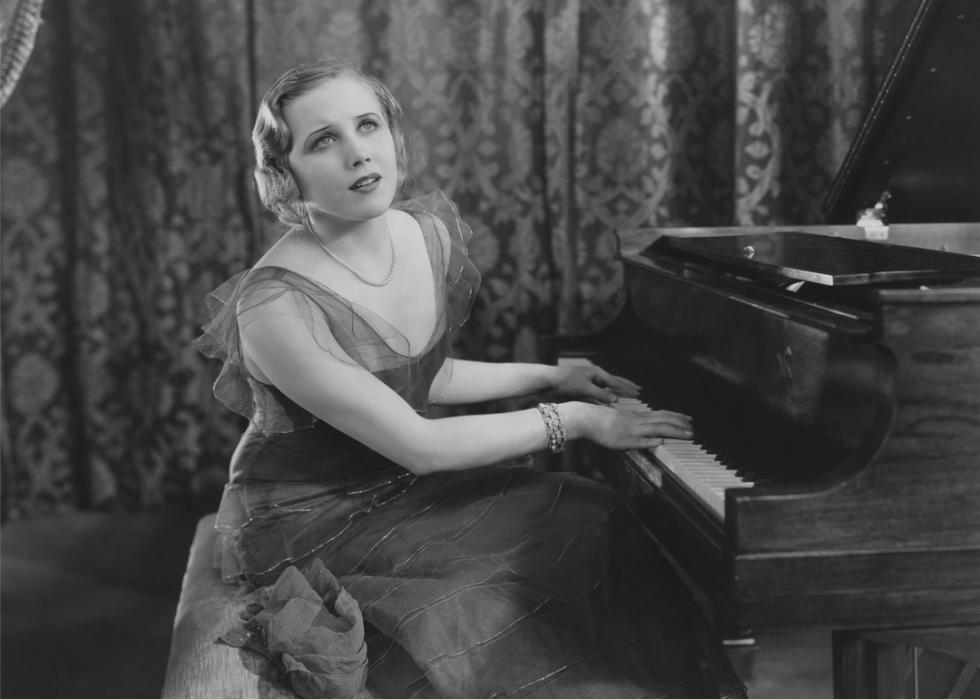
44 / 50
Everett Drove // Shutterstock
"Carolina in the Morning" by Walter Donaldson, Gus Kahn
Originally written for a Broadway musical revue, "Carolina in the Morning" has become the unofficial state song of both North and Southward Carolina. The upbeat standard was showtime written in 1922, but remained popular well into the 1950s, with artists similar Bing Crosby, Dean Martin, Danny Kaye, and Judy Garland making recordings of their own.
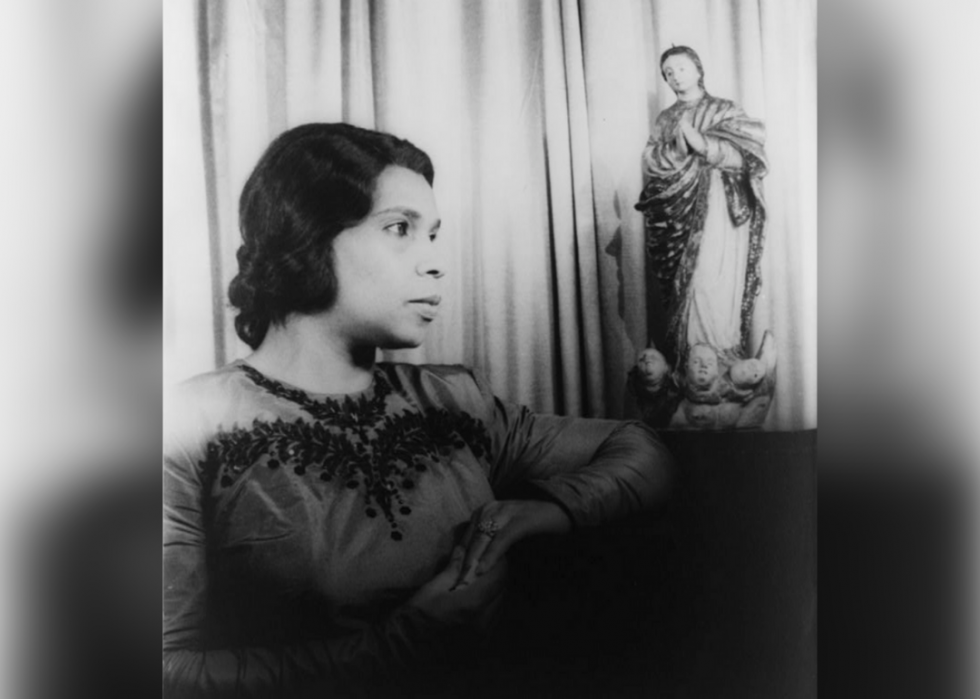
45 / l
Carl Van Vechten // Library of Congress
"Ave Maria" by Johann Sebastian Bach, Charles Gounod
In the mid-1800s, while messing around at domicile one evening, French composer Charles Gounod superimposed a melody over Bach's famous "Prelude in C." The effect was "Ave Maria," a beautiful vocal that mod listeners hear everywhere from funerals to weddings. Gounod's original version of the song had no words, as the text of the Latin prayer wasn't added until 1859, right before the first recording.
[Pictured: Singer Marian Anderson.]
You may besides similar: Lyrics to 50 famously misunderstood songs, explained
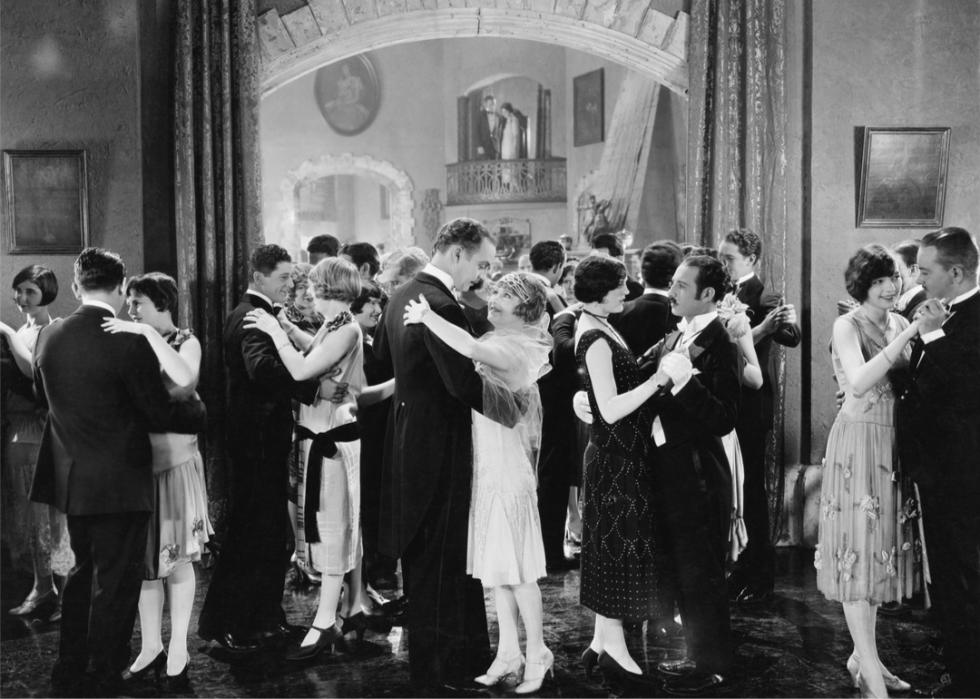
46 / 50
Everett Drove // Shutterstock
"Ain't We Got Fun" by Richard Whiting, Gus Kahn, Raymond Egan
No other song encompasses the carefree, hedonistic attitude of the 1920s like "Ain't We Got Fun." The foxtrot was and so immensely popular a century agone that portions of its lyrics were fifty-fifty included in some of the decade'due south greatest literary works like "The Great Gatsby" (which entered the public domain this yr!) and Dorothy Parker'south short story "Large Blonde."
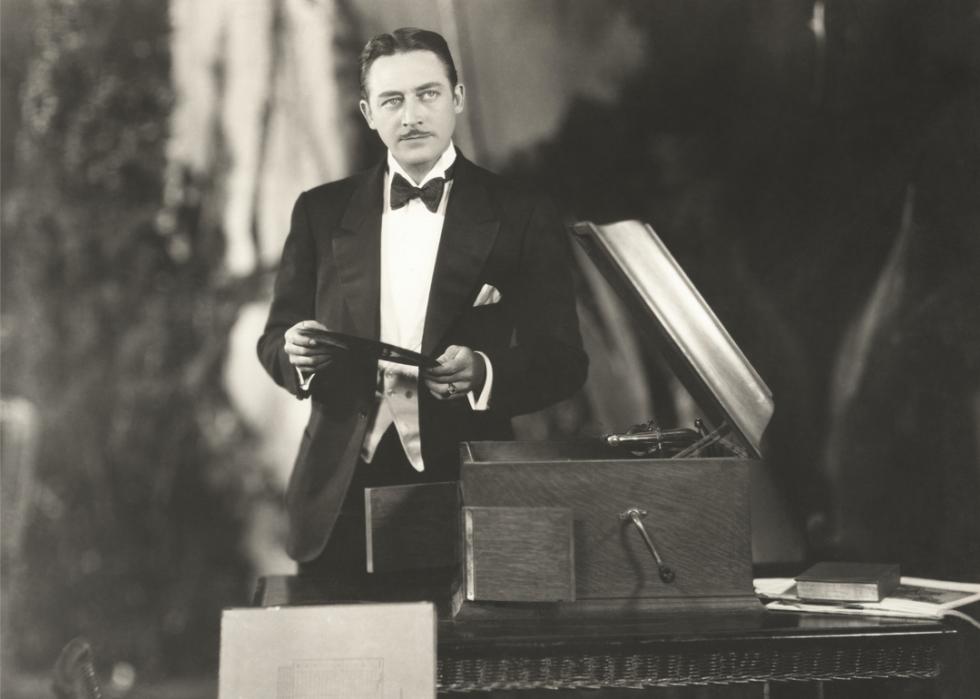
47 / l
Everett Collection // Shutterstock
"Jeanie with the Light Brown Hair" by Stephen Collins Foster
It is rumored that Stephen Collins Foster wrote his biggest parlor hit, "Jeanie with the Light Brownish Hair," in an endeavor to win dorsum his estranged wife Jane (who went past Jeanie). Unfortunately, it seems that the song, which begins each poesy with the lines "I dream of Jeanie…," "I long for Jeanie…," "I sigh for Jeanie…," didn't have the desired effect and the couple remained permanently separated.
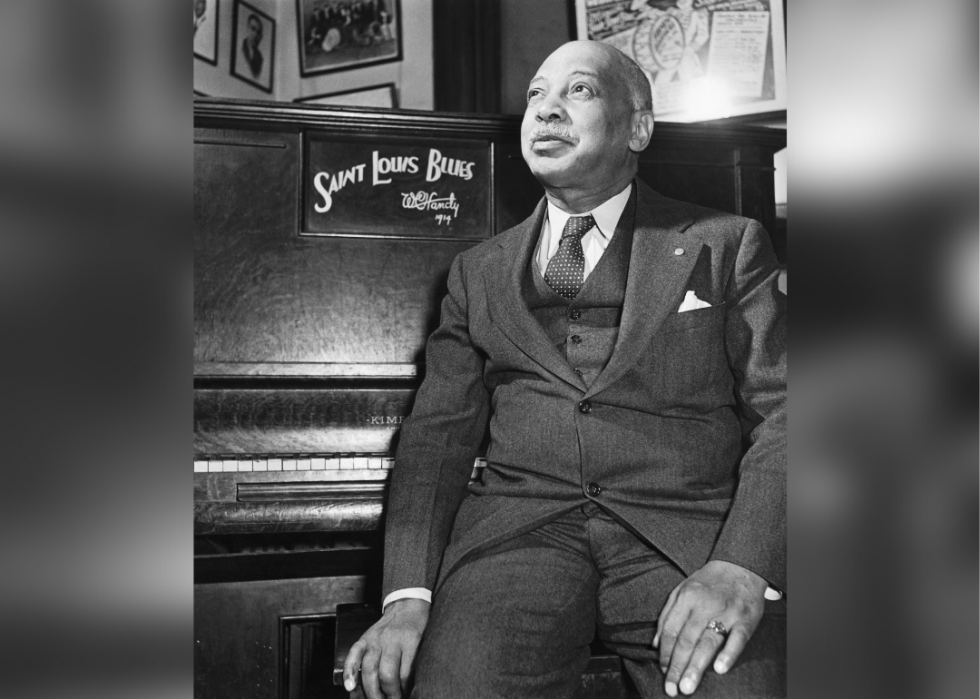
48 / 50
Michael Ochs Archives // Getty Images
"Memphis Dejection" by W.C. Handy
The song of 1912, "Memphis Blues" was written and cocky-published by a Black composer and bandleader named W.C. Handy. The upbeat, "weird" tune was hugely significant, launching blues as a genre and becoming i of the most requested songs in dance halls around the country. In fact, the song was so influential that George Gershwin publicly thanked Handy for inspiring him to write his own masterpiece, "Rhapsody in Blue."
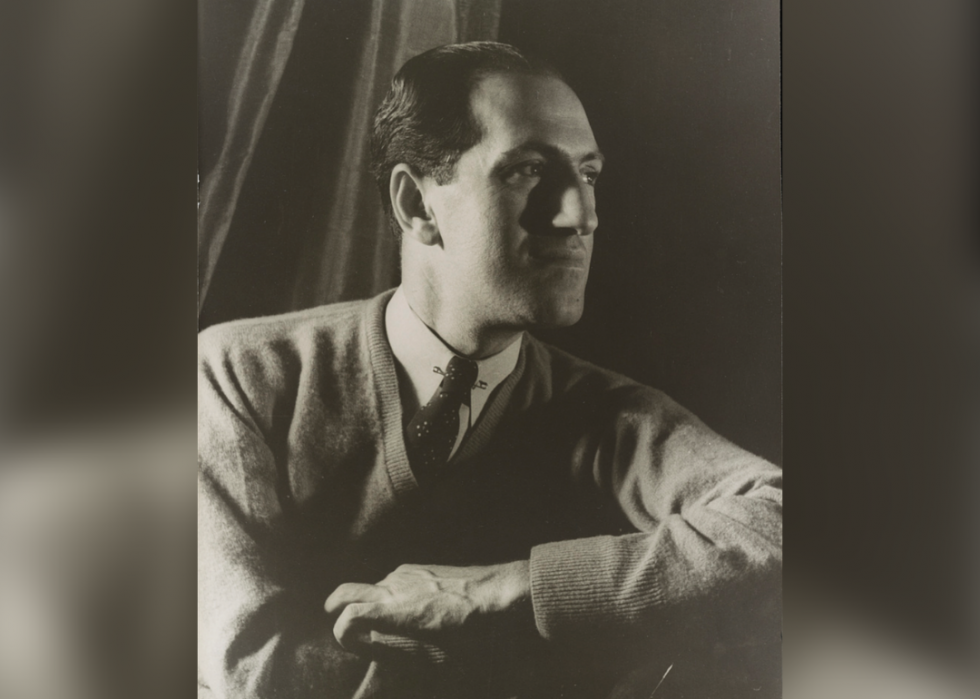
49 / fifty
Carl Van Vechten // Library of Congress
"Rhapsody in Blue" by George Gershwin
A hallmark in American music, George Gershwin's "Rhapsody in Bluish" was a hastily composed piece for a 1924 concert called "Experiment in Modern Music," which was intended to demonstrate that music could exist both respectable and jazzy. Beginning with an iconic clarinet glissando, the vocal established Gershwin as a serious composer and remains a frequently performed song to this day.
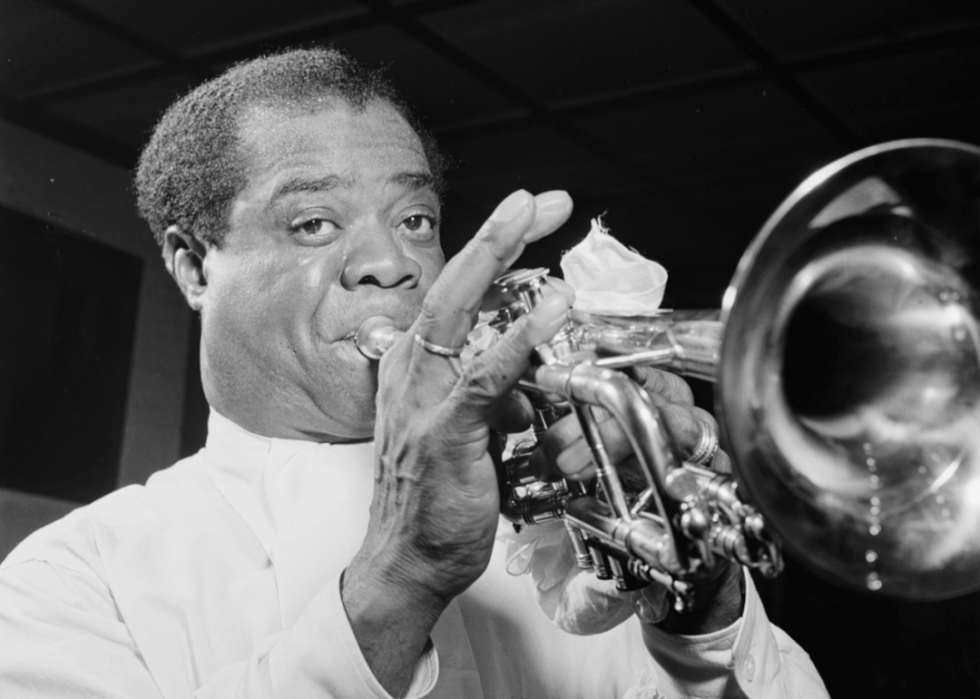
l / 50
William P Gottlieb // Library of Congress
"When the Saints Go Marching In" by Unknown
Though the exact author of "When the Saints Become Marching In" is unknown, information technology's widely believed that the song has its origins in the Bahamas, and was brought to the United states by enslaved people. The Black spiritual was first made popular by New Orleans jazz bands, who often played it at a specific signal in funeral services. Even so, the song really cemented its identify in American culture when Louis Armstrong recorded it in 1938.
Yous may besides similar:The best streaming services for football in 2021
Trending Now
© Stacker 2022. All rights reserved.
Source: https://stacker.com/stories/16430/50-popular-songs-public-domain
0 Response to "1920 Jazz Happy Days Are Here Again Public Domain"
Postar um comentário